
October 2022 • Vol. 15 No. 10 $ 10.95 buy
local (see page 12)
The Food and Grocery Council is an industry association for grocery suppliers providing members networking, events, industry information and strong advocacy.



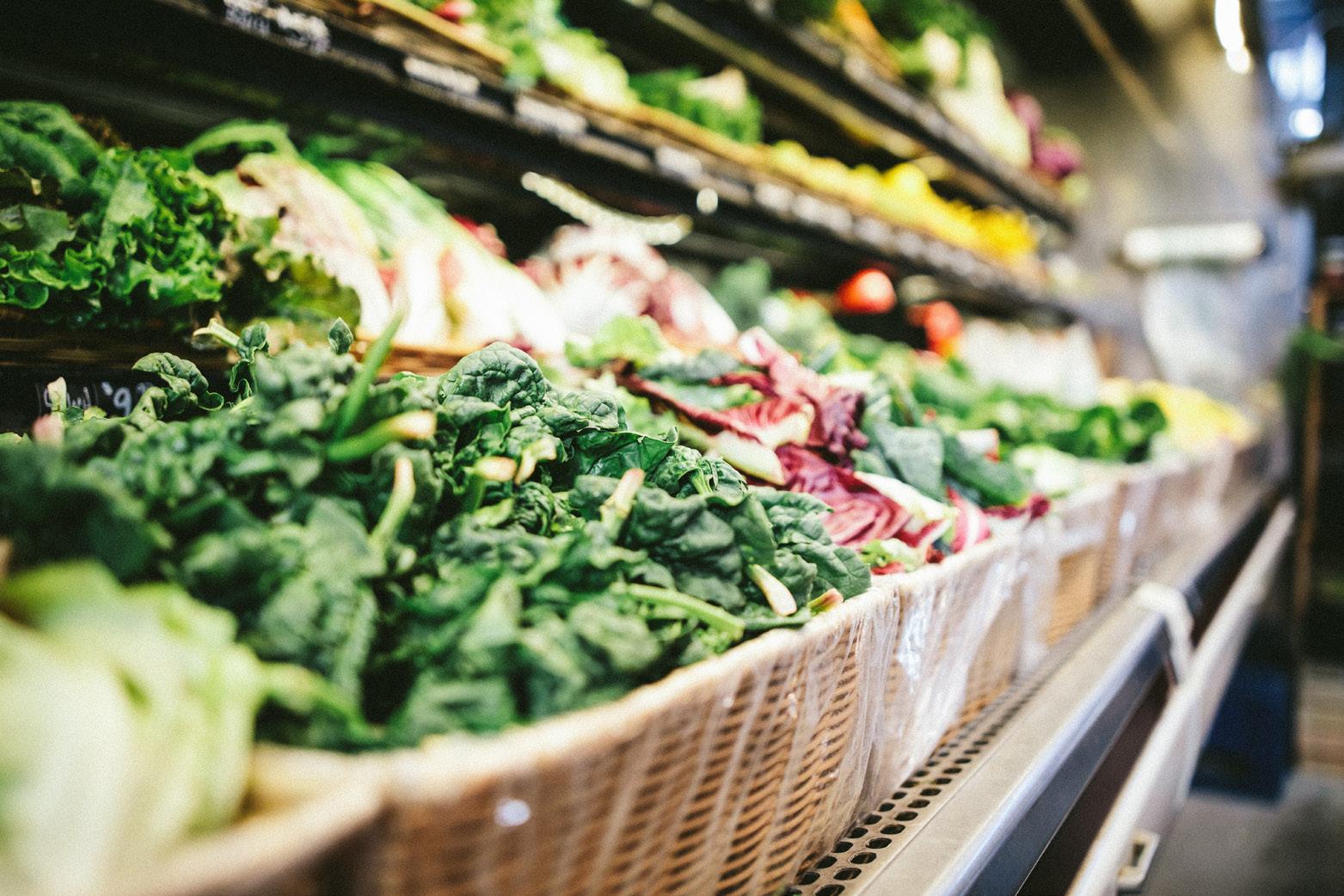











The NEW ZEALAND BEVERAGE COUNCIL is an industry association whose members cover all aspects of the non-alcoholic beverage market both in New Zealand and the export markets.






The Council members are spread throughout New Zealand and come together annually for a conference that covers industry issues and is addressed by international speakers. The organisation monitors product quality, sets standards for the industry and runs national competitions and awards.

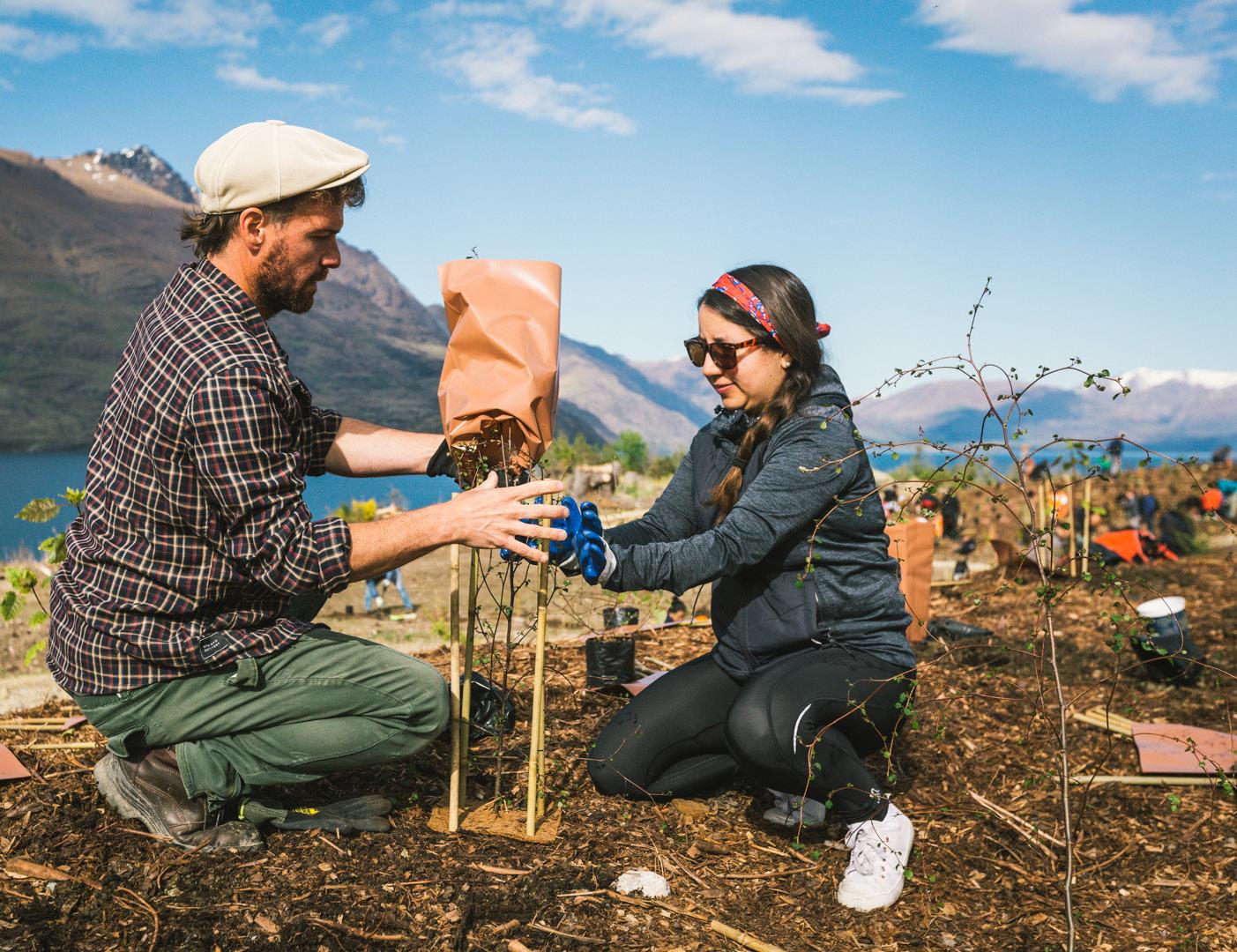

THE NEW ZEALAND BEVERAGE COUNCIL (NZBC) P.O. Box 47, AUCKLAND 1140, New Zealand. Email: info@nzbc.nz Phone: +64 9 309 6100 DDI: +64 9 302 9932




2 I supermarketnews.co.nz
contents PUBLISHER Tania Walters GENERAL MANAGER Kieran Mitchell EDITORIAL DIRECTOR Sarah Mitchell EDITOR Caitlan Mitchell ADVERTISING SALES Felicity-Anne Flack, Caroline Boe EDITORIAL ASSOCIATE Sabrina Snoad SENIOR DESIGNER Raymund Sarmiento GRAPHIC DESIGNER Debby Wei ISSN 1173-3365 (Print) ISSN 2744-595X (Online) Retail 6, Heards Building, 2 Ruskin Street, Parnell, Auckland. PO Box 37140 Parnell, Auckland Call: (09) 3040142 | Email: edit@reviewmags.com ATTENTION GROCERY SUPPLIERS
Contact
•
•
•
•
grocery food grocery & COUNCIL 4 8 20 26 32 14 This magazine is published monthly under license. Please direct all enquiries and correspondence to Review Publishing Co Ltd. This magazine is a platform for the industry and may include content that expresses views and opinions by contributing writers. Content is attributed to the author, and these opinions and the view/s are those of the author/s. They do not necessarily reflect the official policy or position of any other agency, organisation, employer or company. The opinions and material published in this edition are not necessarily those of the publishers unless expressly stated. All material appearing in the magazine, website and social media platforms is copyright and may only be reproduced with the written consent of the publisher. Copyright 2022 50 38 44
us for information on the benefits of membership: katherine.rich@fgc.org.nz
Networking • Industry Updates
Conference and Events
Education and Training
Advocacy and Law Reform
FAKEAWAYS, METAPHORICAL POTHOLES AND BUYING LOCAL
 Tania Walters Publisher
Tania Walters Publisher

tania@reviewmags.com



As consumers navigate rising inflation and out-of-stocks due to supply chain and labour shortages and, for some, contemplate the potential environmental impact of their purchases, the question is, are consumers more willing than ever to push aside old loyalties and try new brands? If the answer is yes, and we believe it is, this opens the door for small, savvy brands to get on the shelf and stay on it.
In this issue, we talk about buying local, how important it is to the New Zealand economy, and why the number of local producers is growing. Our team chatted with the growing number of artisanal producers about their journey, given the challenges of getting on shelf in supermarkets, the trials of e-commerce and what's next on their FMCG journey.
EVs have had a hard road, filled with metaphorical potholes, to get to where they are now, so what's ahead? Several issues still pose obstacles to the widespread adoption of EVs. Capital cost has always been a significant factor in the EV purchasing decision for businesses, with many business owners believing that EVs are beyond their budget. Around the world, governments are
driving the shift away from fossil-powered cars to electric vehicles, so the question is, what is this Government's plan to provide impactful and sustained support for EVs in the business sector?

From fish & chips to burgers and curries, some takeaway classics just hit the spot when nothing else will do. During the lockdowns, consumers developed a keen interest in Fakeaways, turning their hand to recreating their takeaway favourites. These (sometimes!) healthier alternatives seem to be here to stay, and the ingredients to prepare them have garnered a place on shelf. As the cost of living is rising by the day, for Kiwis, removing the temptation to hit the drive-through means the trend to Fakeaways can only grow.
Enjoy this latest issue, and if you have a product launch, shout-out or opinion you'd like to share, please get in touch. n
October 2022 I 3 publisher'snote





CLICK HERE
THE INSPIRE+ NZ ARTISAN AWARDS SAW ITS BIGGEST YEAR YET, WITH OVER 1,000 THE COUNTRY. ENTRANTS HAVE BEEN PATIENTLY WAITING IN SUSPENSE FOR THE




1,000 ENTRIES MAKING IT ONE OF THE LARGEST FOOD AWARD PROGRAMMES IN THE AWARD ANNOUNCEMENT AND, OF COURSE, THE SUPREME WINNER FOR 2022. HERE TO VIEW
COUNTDOWN IS IN LINE WITH FOOD PRICE INDEX
Countdown received four times the number of cost increase requests from suppliers in August 2022 versus the same month the year before. Requests ranged from a one percent increase to a 72 per cent increase and averaged at eight percent; meat (+12.2 percent), fresh produce (+12.9 percent) and bakery items (+9.6 percent) were the main drivers.

“We pay our growers and farmers market prices for meat, dairy, fruit and vegetables, so higher international and local prices are reflected in what customers are paying for their food at the checkout. Compounding this, a large portion of the products Kiwis rely on are imported from overseas, such as bananas, flour, pasta and toiletries. Inflation on imported products is roughly double that of local products,” said Steve Mills, Countdown’s Commercial Director. n
Click to read more
NATIONAL DESIGN AWARD WINNERS
Organised by the Toi Manahau / Designers Institute of New Zealand (DINZ), the Best Design Awards were held on Sunday, October 9, at Auckland’s Aotea Centre. The most prestigious event of the Australasian design calendar recognised the strongest work across nine core categories: Digital, Product, Toitanga, Graphic, Moving Image, Spatial, Value of Design, Public Good, and User Experience. The awards were attended by over 1,000 designers, with 1,381 entries for the competition this year.
FMCG winners at the event included Burly Gin by DDMMYY, Boring Oat Milk by DDMMYY, Duck Islands Ice Cream Cake Box by Think Packaging, Six Barrel Soda by Marx Design and Tipple Topper by Marx Design. n

Click to read more
NEWMARKET WELCOMES NEW WORLD

New World Newmarket opened its doors this month. The new store was designed with the needs of a busy urban community in mind and focuses on convenience and ease. The deli is a key feature, with an extensive range of food-to-go offerings. The store was a $7.5 million investment from Foodstuffs North Island.
“Each of our stores is proudly locally owned and operated, and becoming a co-op member and owning your first store takes many years of hard work and commitment to the grocery industry, which Matt has demonstrated over more than 15 years at Foodstuffs. To be able to support him on his journey to ownership makes this store opening that much more special,” said Morgan McCann, Foodstuffs North Island General Manager of Retail. n
Click to read more
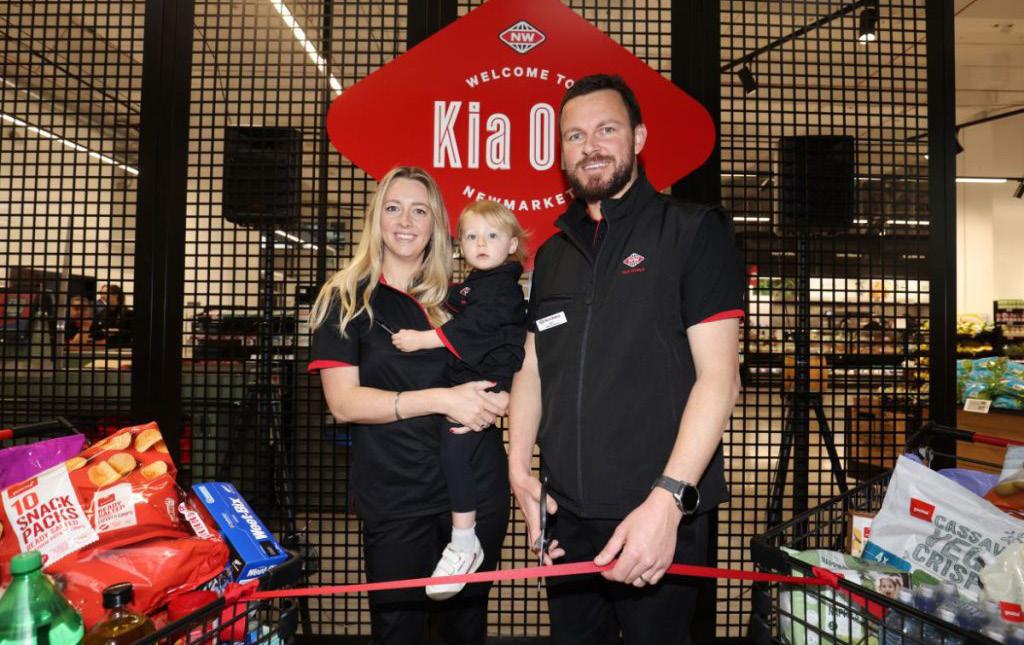
6 I supermarketnews.co.nz
mostread
on web
THE WAREHOUSE GROUP STRENGTHENS LEADERSHIP TEAM
The Warehouse Group has appointed Anna Shipley to the newly created Chief Corporate Affairs Officer role. Group CEO Nick Grayston said Anna will be an outstanding addition to the Group Leadership Team at a time of transformation and growth for the business.
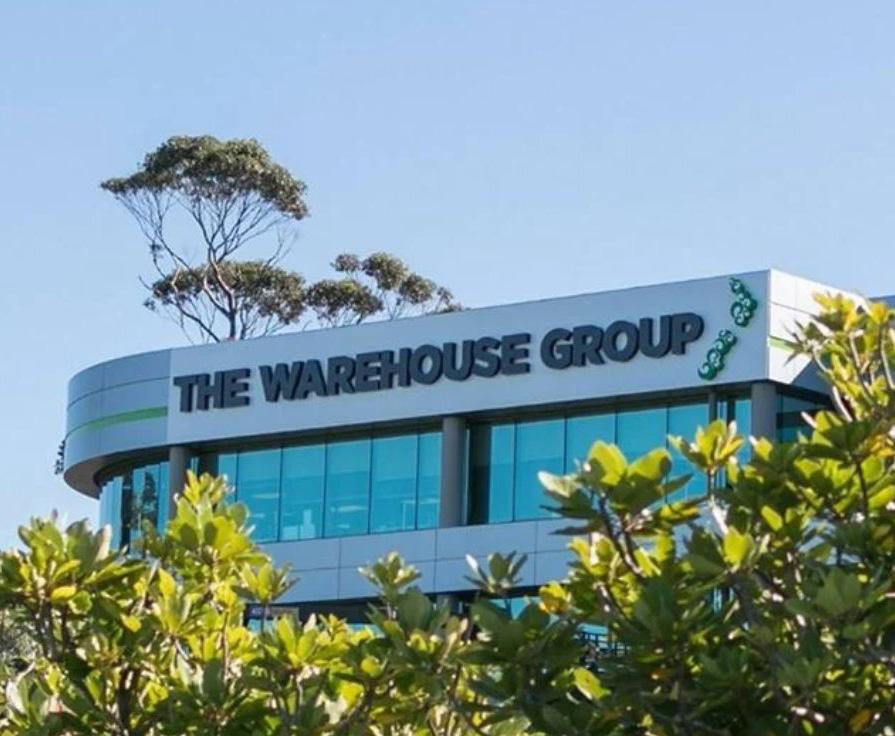
“Since joining The Warehouse Group as Corporate Affairs Lead in October 2021, Anna has already made a significant difference to our business, and we’re thrilled to have her join the Leadership Team.”
Before joining The Warehouse Group in 2021, Anna was General Manager of Corporate Affairs at BNZ, Director of Communications for Nokia China and APAC based in Beijing, and Head of Communications for Nokia & UK based in London. n
TRADE ME HOLDS NEW WORLD’S SUMMER SECRET
New World’s summer promotion officially starts on October 31, rumours are swirling as to what the supermarket is bringing to the table this year, and they have a mysterious TradeMe listing that might spill the news. From Monday 17, die-hard fans can jump online and bid for full sticker booklets that can be redeemed for the entire mysterious collection. All proceeds from the winning bid will be shared between the City Missions in Christchurch, Wellington and Auckland.
COST-OF-LIVING CRISIS DEFINES TOP TRENDS FOR 2023



As consumers adapt to a global cost-of-living crisis in the face of economic and political volatility, and with budgets stretched and supplies under strain, brands must be flexible in action and open to connecting more with consumers, while also taking full advantage of rapidly emerging technologies.


This is the word from Innova Market Insights which has identified “Redefining Value” as its top F&B trend for 2023.
Innova’s annual Top Ten Trends are based on wide-ranging global consumer surveys. Coupled with comprehensive market and new product data, they reveal not only what is driving consumer decisions now but also ways in which brands and innovators can successfully adapt to future realities.
In addition to a heightened demand for competitive pricing, consumers have told Innova that they still seek nutritional value and expect a continued shared responsibility for environmental security. Meanwhile, younger generations who have grown up in an inclusive digital age are gaining greater influence, changing markets, and creating new opportunities. n Click to read more
“Every year, the New World Christmas promotions are incredibly popular on TradeMe. There’s always a surge of auctions with redemption stickers up for sale, with people keen to get their hands on as many stickers as they can find. We thought we’d flip the situation for a good cause and START the campaign on Trade Me, enabling one lucky bidder to be the first person in NZ to get a full set of six before anyone else. I hope we don’t give too much away on Trade Me, but we’re confident that everyone is going to be as excited as us when they work out what our summer promotion is this year,” said Giselle Bleakley, Head of Marketing & CX for New World. n
Click to read more

October 2022 I 7
big boots to fill
A SEND-OFF FILLED WITH GRATITUDE
Katherine Rich’s first-ever memory of the FGC was bumping into the mighty Brenda Cutress in the corridor of Parliament when she was an MP about 20 years ago. When first stepping into her role as Chief Executive Officer, she considered ten years of service. Still, she doubted following Brenda’s incredible 20 years. Now 13 years have flown by as the role kept changing and expanding into exciting new areas. When it was decided to step up advocacy for a Grocery Code, Rich wanted to ensure it was achieved before passing the baton.
The great people within the FGC membership who were experts in their fields and gave time as volunteers served as inspiration for her work in the FGC. In particular, each Chair’s leadership, knowledge and humour (because having a sense of humour is a must to chairing any industry body).
“I can’t thank Peter McClure, George Adams, Pierre van Heerden, Veronique Cremades, Tim Deane and Mike Pretty enough for their support and friendship,” said Rich.
One of the most significant challenges Rich feels she faced was the handful of retail and company leaders who took FGC’s advocacy personally and did not understand the role of an industry association to be a strong voice for members and raise issues. On the flip side, some did absolutely understand the role of an advocacy body, and she did appreciate the professional


8 I supermarketnews.co.nz
FGC:
Katherine Rich
and respectful way that Spencer Sonn, Steve Mills and the rest of the Woolworths’ team conducted themselves during the Commerce Commission process.
“They put forward strong arguments and professional submissions in a respectful way and did not (as far as I experienced) apply pressure on me, the board or other suppliers. They were a class act.”
Rich looks forward to watching how the Fair Trading Act, Commerce Act, Grocery Code and the establishment of a grocery regulator will unfold within the industry. She believed it would remain a challenging market because the duopoly structure remains and still has the power to force suppliers to accept arrangements that would not be accepted in a competitive market. The new rules will introduce some significant limits to that power, but business will always be challenging. Suppliers will still have to work hard to innovate, be on top of their numbers, and compete ferociously with their peers. Suppliers will still have to have courageous conversations and raise concerns directly and failing that with the new Grocery Regulator.
“I will watch from the sidelines the continued rollout of Foodstuffs North Island’s new buying model, which continues to forge ahead at speed.”
The new model’s mantra is ‘customer and insights-driven,’ yet feedback from members is unanimous that the only number that matters is the margin. For many, the ‘Emperor has no clothes’ moment occurred when the most popular products in a category were deleted. There have been some reports of decisions being made to do the opposite of consumer insights and customer preferences.
“It will be interesting to see if the streamlining of New Worlds through the reduction of consumer choice with the deletion of popular brands and margindetermined planograms makes customers believe where they shop is more suitable,” said Rich.

“In the meantime, Countdown is hoovering up business with suppliers who report it is great to deal with, has a clear plan, and is executing at store level. As a member said last week of Countdown, ‘They negotiate hard, but you know a deal is a deal, and they do what they say they will do. If you invest, you know you will get a return, and if something goes wrong, they
fix it.’ Quite the contrast from 2014.”



Rich does not doubt that Raewyn Bleakley will be a great leader of the FGC and a strong advocate for members. She has known Bleakley for over 20 years and holds her in the highest regard, as do many Wellington circles. Her advice was to embark on a visits programme to meet as many members as possible and to listen to what they’d like to see as part of a refreshed FGC agenda. The best ideas for new projects always come from members. They are the ones who determine the shopping list for effort and delivery.
“I’ve ticked off the shopping list members gave me, and now it’s time for members to consider what it is they’d like to see over the next decade. I encourage all members to reach out to her and let them know what’s important to them. I am confident she will be able to encourage current freeloaders, such as Mars, to re-join FGC to contribute to the New Zealand industry’s work on sustainability, packaging, obesity, and other industry-wide initiatives.”
What will Rich miss most about the role? New innovations from FGC members came to mind, but most importantly, she will miss the people, “The people, the people, the people.”It has been a privilege for her to work alongside the FGC team of Carole Inkster, Brent Webling and Kira Mikelatos for more than a decade.
There are no concrete plans set for Rich as she moves forward. She suspects joining a firm and continuing working on things of interest alongside and spending more time with family is in her future. An FGC member has already asked her for help on a few projects, so that should keep her out of mischief before heading to Stewart Island for a holiday.
On a final note, Rich said:
“I would like to thank Tania Walters, Sarah Mitchell and the team at Review Publishing for their support and passion for the industry. Tania’s work being a champion for New Zealand artisans is tireless. Once again, I would like to acknowledge the passing of the great Peter Mitchell. I so miss his one-line emails that never minced words; what a privilege to have worked with him and other great members who sadly passed away during my time as CEO, such as John Macdonald, Baden Ngan Kee, Adrian Cook, Debbie Herbert, and Janine Holt. Gone, but never forgotten!
A thank youFROM OUR TEAM

Katherine’s tenure as CEO of the FGC has contrasted with the previous incumbent Brenda Cutress, whose shoes many thought would be challenging to fill at the time. However, Katherine has brought to the role a skillset that has enabled her to continue to build on Brenda’s legacy, reinforcing the FGC’s advocacy of the New Zealand grocery sector.
“With change often comes some criticism, but Katherine has weathered the storms over the years and stood firm as a voice to be listened to regarding legislation and regulation affecting the food and grocery industry,” said Tania Walters, publisher of SupermarketNews.
“Katherine’s many contributions to the magazine, her support, knowledge and friendship will be missed.
“From our family, both personal and professional, we wish you all the best, Katherine, as you embark on the next stage of your career.” n

October 2022 I 9
tania@reviewmags.com
Tania Walters Publisher
A WARM WELCOME
Raewyn Bleakley was first drawn to the FGC when she was at HANZ and saw the impressive CEO Brenda Cutress at various meetings. She was interested in the industry and impressed by the way Brenda represented it. When Katherine took over, she kept an eye on what was happening. She admired the very effective way she interacted with the media and government on some incredibly gnarly issues.
“When approached about whether I would be interested in the role, I said yes in a heartbeat. Having enjoyed my previous roles in industry associations – coupled with my interest in food, nutrition and sustainability, and my deep respect for the role of business contributing to a thriving economy and healthy society and planet – this role was immensely appealing to me,” said Bleakley.
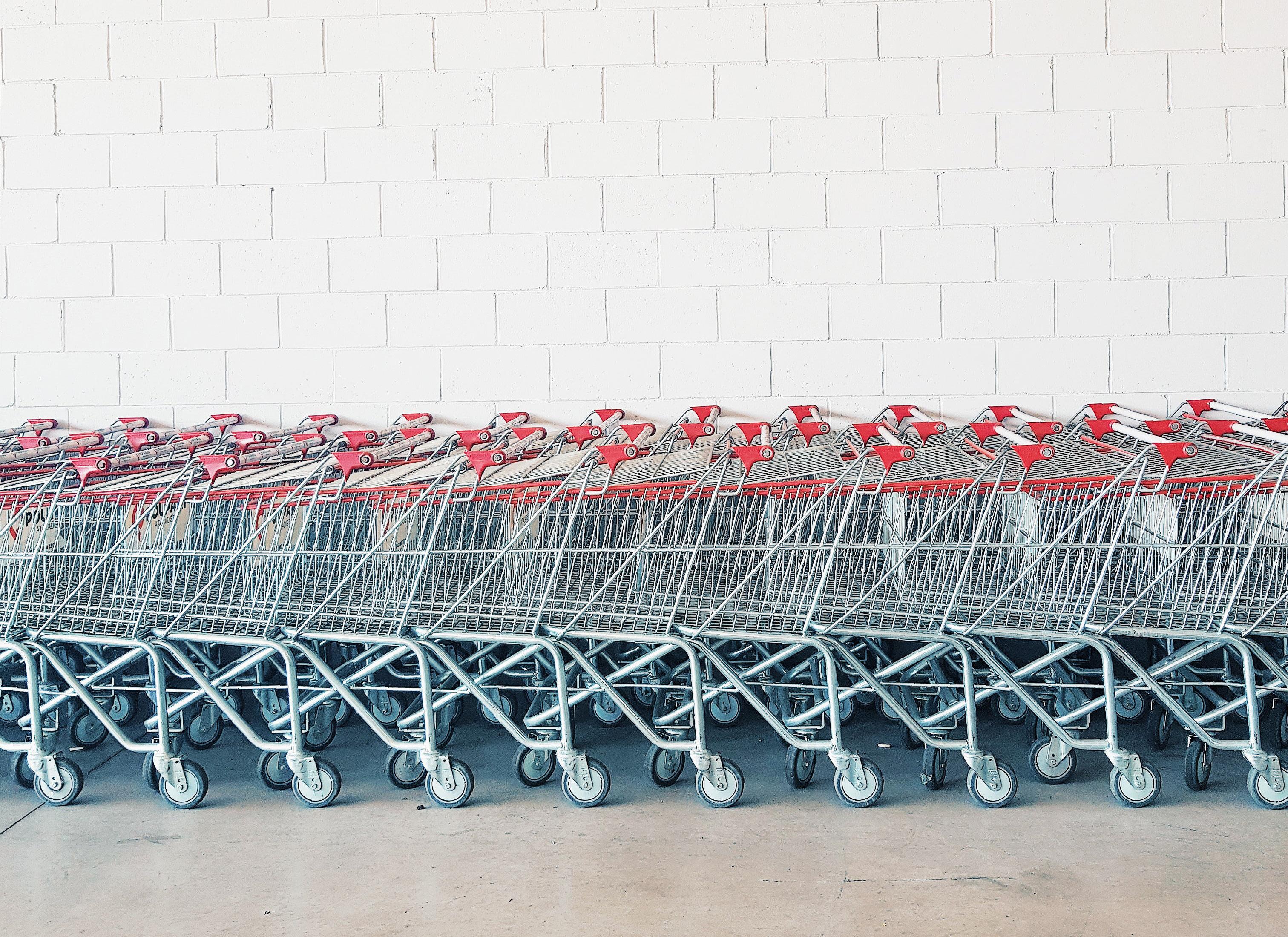
Growing up in Blenheim, Bleakley developed an interest in food at an early age. Her first job at 12 was working in a cafe after school. She studied human nutrition, food science and food service management at the University of Otago before spending some time lecturing, managing the halls of residence kitchens and teaching human nutrition students. After spending six years at the university while gaining a Post Graduate Diploma of Science, she joined the Hospitality Association of NZ as the Southern Regional manager. She travelled the lower South Island representing and assisting bars, pubs, nightclubs, hotels and restaurants. This was when she first met Rich, who was a Dunedin MP at the time.

FGC:
10 I supermarketnews.co.nz
big boots to fill
Raewyn Bleakley, CEO, NZ Food & Grocery Council
“I met her with the local HANZ executive to lobby her on proposed changes to the Sale of Liquor Act. Katherine immediately impressed me. She struck me as well informed, fair-minded and prepared to listen.”
Bleakley transferred to Wellington in 2002 and became the first National Operations Manager for HANZ in 2004. In 2008 she moved to the Bus and Coach and Rental Vehicle Associations as Chief Executive, which was a steep learning curve given it was a dual role responsible for two associations in another relatively highly regulated industry. From 2012 to 2014, Bleakley was the Chief Executive of Business Central, a fascinating role that involved a large amount of advocacy to councils as then Prime Minister John Key memorably observed Wellington ‘to be dying.’
In 2014 she moved into working for the government as Regional Director for Waka Kotahi (the NZ Transport Agency) and eventually the General Manager role. In 2019 she took up the newly formed role of Deputy Chief Executive at Fire and Emergency NZ and was responsible for communications and media, risk and assurance, legal, the Board secretariat function, and several other programmes of work, including coordinating the response to Covid and mandatory vaccination. Over the years, Bleakley has also held several board positions, including a seven-year stint
on the Wellington Zoo Trust.
Meeting with FGC members and learning about their businesses and the challenges they are facing is something about her new role that excited Bleakley. Continuing work that ensures members have a balanced and fair market and that consumers have competitively priced goods is a key priority.
“I enjoy being the conduit between government and business and working to strike the right balance, so regulatory settings achieve positive outcomes.”

Bleakley greatly admires Rich’s work for the FGC over the last 13 years and her ability to play the long game. Charting a course and relentlessly mounting robust arguments, firmly and graciously, to ensure real change.
The power of an industry association with a united and strong voice can never be underestimated. Achieving this is not straightforward, given the diversity of members and differing priorities. They often compete against each other.
“An early goal for me will be gaining a deep understanding of the industry and working to consolidate and amplify the voice of FGC to cement its role as an effective change agent.”


Some significant challenges she sees for the year ahead include implementing the various measures resulting from the market study. Bleakly considers these imperative and expects it to take levels of tenacity and



patience to make changes stick.
To grow membership and industry representation, Bleakley will work hard to understand why the FGC doesn’t attract some businesses and how it can improve the value proposition to make it a sound business decision for them to belong.
“Running a business in a competitive industry is challenging for the best operators. I have deep respect for people who are prepared to risk their livelihood to follow their dream of running their own businesses and, in doing so, create jobs and contribute positively to our economy and society. I have seen over many years how difficult this can be and how important every spending decision is, so it’s incumbent on FGC to provide tangible value to all members.”
Bleakley feels incredibly fortunate to have had a decent break between roles. She has spent her time learning to fly a fully electric plane, receiving her Open Water Scuba Diving Certification in Vanuata, and exploring the food and wine in Hobart and Melbourne.
“Whenever I travel, I make a beeline for supermarkets and food stalls and am always on the hunt for the best coffee. I’ve enjoyed seeing what’s on offer in supermarkets and local food markets as much as visiting museums, historic sites, and art galleries, so I’m thrilled to have this opportunity to work in this industry.”
October 2022 I 11
“B




oth environmental benefits and community emphasis are driving factors behind the buy local movement. Consumers are becoming more conscious of sustainable ethics and their carbon footprint, and because of this, they are gravitating towards local products. There are economic benefits too. Buying locally from New Zealand businesses increases the employment of local people rather than paying international firms where there is no local benefit from the money spent on goods,” said Brad Worthington, Managing Director of Fogdog.
Buying local allows smaller producers and suppliers a chance in the market against more prominent brands. Ultimately, more competition and a greater variety of products are the best outcomes for consumers.
“We are so grateful that kiwis care more than ever about supporting local. This renewed dedication to buying local means


buylocal Good for you. Good for you. Good for you. Good for the earth. Good for the earth. Good for the earth. Great for brekkie. Great for brekkie. GReat for brekkie. Chef crafted breakfasts Award-winning & chef endorsed Premium organic ingredients Gluten & grain-free Innovative, recyclable & compostable, plant-based packaging craft craft Craft granola granola granola www.yumnz.co.nz orders@yumnz.co.nz DRIVING BUYING LOCAL
challenges for local brands.

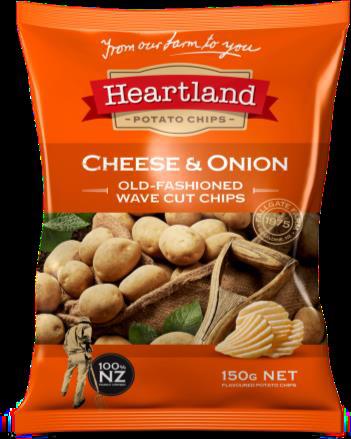
“A small business owner always rides the rollercoaster of business highs and lows. The most stressful impact of Covid was the rollercoaster with higher highs and lower lows,” said Geoff Crawford, Managing Director of Telegraph Hill Limited.
“One of the biggest challenges was the change in product style demand. Our hospitality slowed, but our supermarket/retail, corporate gifts and gift box company market grew significantly. We quickly adapted our bakery output to suit what was needed at the time. One of the most important things to us was ensuring our staff were okay. Another challenge we faced, along with everyone else, was dealing with supply chain issues,” said Alistair Parker, Molly Woopy Director.
Research and development is vital in producing a buy local product. What is already out there, where are the market gaps, and how can a brand be price competitive while undertaking sustainable, local business practices? Customers need to be at the centre of all thinking.


“A couple of lenses on this from us, both as a consumer-facing business and a manufacturer ourselves. The cost/quality conflict will always exist. While we’ve positioned ourselves to be accessible pricewise, we are finding that where a quality





option is available locally, people are prepared to stretch a little,” said Kyran Rei Co-Founder, Business Development Manager of plan*t.
The future of buying local and New Zealand-made products is a collaborative one and a chance for kiwi businesses to work more efficiently. As new grocery industry requirements emerge, shelf space can open up for smaller companies.

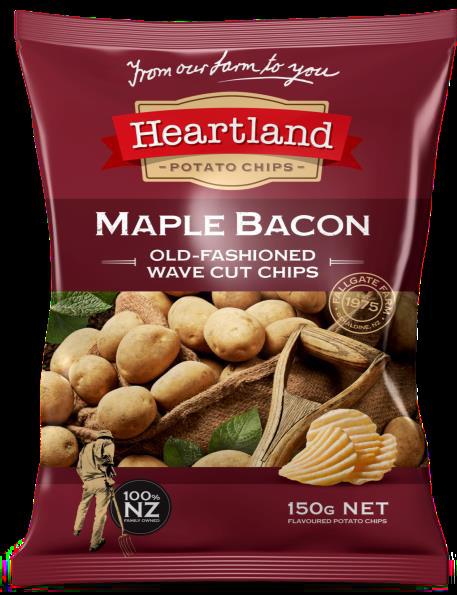

“We see it as vitally important that smaller brands have the opportunity to showcase their products. Consumers want locally made, good quality choices, and if local producers can’t get a word in, the magic of locality can be lost. It’s about ensuring there are fair and equitable entries to the market. The reality, though, is there is limited shelf space in traditional retail. We see the opportunity in the growth of online platforms to provide more choices and added convenience for the customer,” said Scotty Baragwanath and Madeleine Smart, Founder and Marketing Manager at Blue Frog Breakfast.

“We’d like to see priority is given to local producers and more recognition for factors like sustainable packaging and fair wages, meaning potentially lower margins for supermarkets rather than higher margins being prioritised over ethical concerns. We do see some of the major retailers like New World implementing ‘buy local/NZ made’
campaigns which are really heartening. Our independent retailers are also critical, not only because they often lead the way in supporting local producers, they’re always on the hunt for new products and brands that are challenging the status quo, so they’re incredibly important for food innovation in New Zealand as well,” said Sarah Phillipps, Head of Marketing at Raglan Food Co.



“Presently ranging decision is primarily driven by big data – a function of unit sales turns x retailer margin offered. As such (to ensure local suppliers maximise their chance to get ranged), local manufacturing needs to stay cost competitive day to day to optimise the margin equation for retailers who need to offer their assortment at the keenest possible price for consumers. The key challenge to overcome presently is the collective added costs to operating a local business which is not helping keep our ranges cost competitive with imports,” said Peter Cox from Harraways.
A common theme for the future of New Zealand-made and buying local is collaboration. Businesses are looking at ways to engage with locals and celebrate one another to showcase the incredible products available to the nation. From local ingredient suppliers to packaging businesses, transferring as many aspects of a company as feasible to be locally operated will help keep brands active. n
I 13 All new look, same great taste
A RAW DEAL
In recent years, terms that refer to the nature of how foods have been harvested, collected, and produced have become popular. Natural, organic, whole, and raw are all descriptors used to instil a sense of ‘healthy choice’ in consumers’ minds when selecting which food products they should buy to achieve their clean eating goals.
In the honey industry, especially in New Zealand, there has been an insurgence of honey products being labelled as raw. Each brand that applies this term has a different definition of what raw means to them, which has been made up to suit their existing practices. Without a set definition, applying the descriptor to honey products has been a free-for-all.

Manuka Doctor has approached industry and government bodies with concerns, as they believe this leaves the industry wide open for scrutiny and legal action. Companies in the USA have been taken to court for this exact issue, where negative exposure has and will have severe ongoing consequences for the industry. Especially in the promotion of the clean, green nature of New Zealand and highquality Mānuka honey.
For Manuka Doctor, the obvious (and major) concern here is, what do the consumers think they’re getting? Honey processing practices in New Zealand should be relatively similar across the industry. Almost all honey that has been packed into a jar, especially those destined for export, has to undertake a certain level of processing to ensure that it is fit for consumption. When customers compare raw Manuka Doctor Honey to its competitors, it is very difficult to explain that there is no standard industry definition.
So, what is raw honey if a definition doesn’t exist and the regulatory bodies don’t want to weigh in? For this, it is essential to understand what raw honey means to the consumer. Manuka Doctor did not want to label or just apply the term raw without having a robust
understanding and definition that could be attributed to it. Failing to find those answers locally, they looked abroad. The search found an organisation that provided certification with a systems-based approach to establish a standard that would make customers feel like they were getting the best quality products.
Manuka Doctor is proud to announce that we are the only honey company globally to carry the R.A.W. Certification mark. With new labels rolling onto retailer shelves in October 2022.
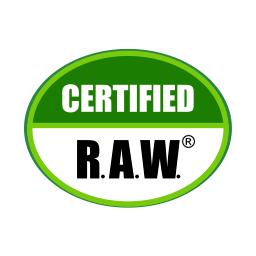
CERTIFIED R.A.W.
Dr Shiva Ayyadurai facilitated the C.L.E.A.N. & R.A.W. food certification; an MIT trained Systems Biologist who graduated from the Department of Biological Engineering. With the leadership of Dr Ayyadurai, the consortium of industry leaders employed a multi-criterion, systemsbased approach in determining three critical elements underlying the Certified R.A.W. standards:
They must be ‘Real.’ The Real element was captured by the criteria that the product must be 100 percent safe and must have all nonGMO ingredients.
They must be ‘Alive.’ The notion of Alive was denoted by the level of bioavailability of the combination of ingredients in the product, determined using a bioinformatics approach currently enabled through the CytoSolve® technology.
They must be ‘Whole.’ The element of Whole was captured by two criteria: the level of organic ingredients and the ANDI nutrient score. n
14 I supermarketnews.co.nz
buylocal

buylocal
PRICE
Once thought to be the major barrier to buying local, great prices are now another great reason to support NZ businesses. With surging shipping costs, and lengthy delays and unfavourable exchange rates, it just makes sense.
TIMES ARE TOUGH
Small businesses have had a tough few years. Some have made the difficult decision to close and many are only just hanging in there. In economically challenging times, every dollar spent locally can make a huge impact.
QUALITY
Attention to detail is what separates locally made items from mass produces ones. NZ made products are much more likely to stand the test of time, making them sustainable, and in many cases are reusable and recyclable.
IT’S THE KIWI WAY
Kiwis love supporting Kiwis. Entrepreneurship can be a difficult and lonely journey. When you spend money, you’re casting your vote for the kind of world you want to live in. In fact, research suggests two-thirds of every dollar spent on a small business is kept in the local economy.
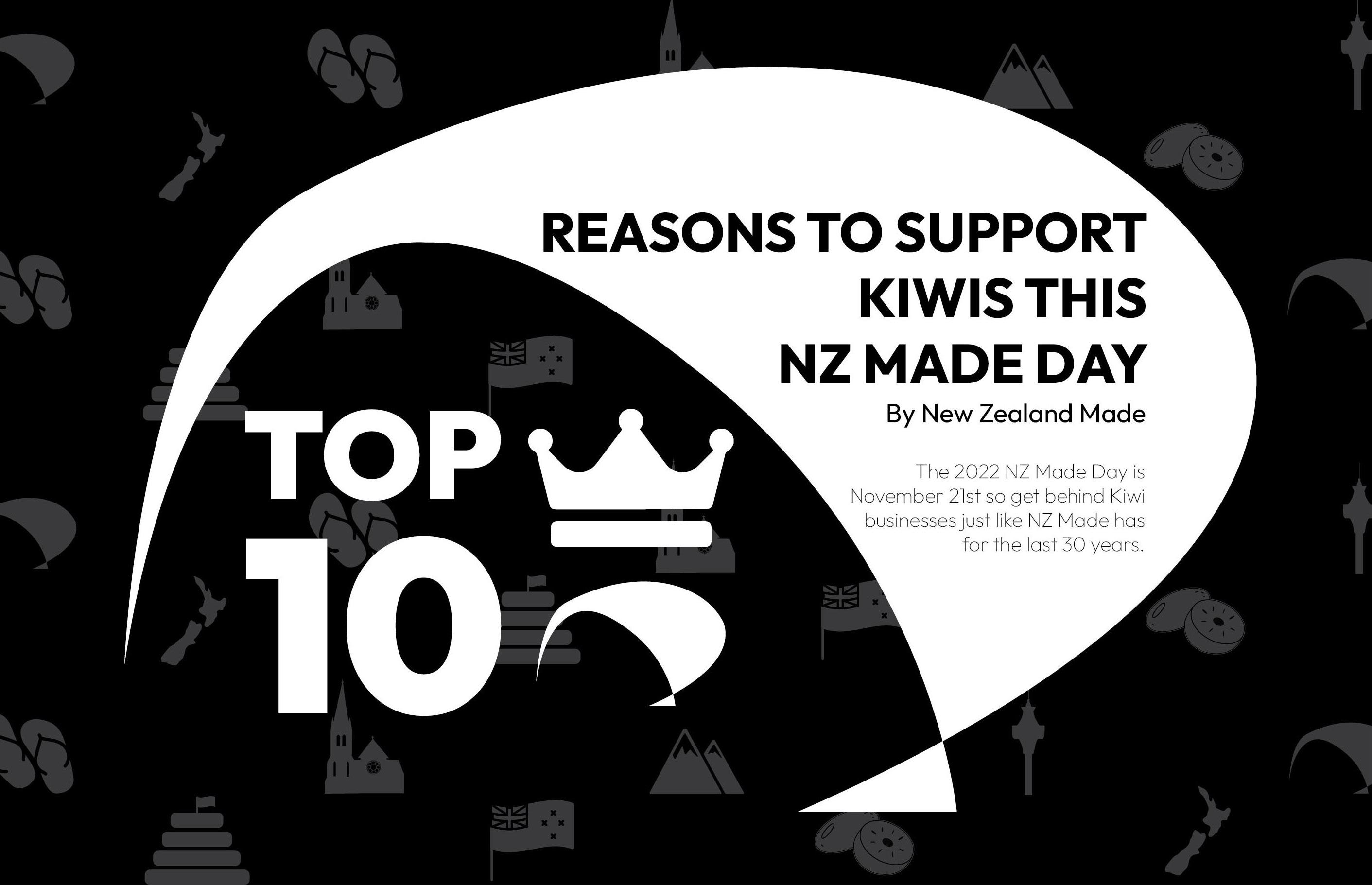
16 I supermarketnews.co.nz
THE TIME IS NOW!
NZ Made has seen a resurgence in recent years with both businesses and consumers getting behind the ‘shop local’ movement. More than 85 percent of Kiwis recognise the logo, and more than 60 percent of consumers are actively seeking NZ made brands over imports. It’s time to step up and show our support and back Kiwi made goods and services.


RANGE

There is an exceptional range of NZ Made products on offer – it blows our minds what small businesses are doing in this country – from establishing and entire tea industry here (Zealong Tea Estate) to a Kiwi take on a classic (Bootleg Jerky). Seek out NZ Made alternatives next time you shop – you may be surprised at what’s on offer!

FAIRNESS
Sourcing goods from factories that don’t stack up ethically and discharge toxic waste isn’t who we are. Kiwi consumers are becoming more aware of the life cycle of what they purchase and are making more ethical purchasing decisions for people and the environment.
Looking for a marketing edge?




REDUCE WASTE
Waste reduction is a huge motivator for supporting buy local campaigns. Generally speaking, manufacturing close to home ensures greater quality control, reduced waste and significantly reduced logistics emissions.
TREATING PEOPLE RIGHT
NZ has strict health and safety standards significantly reducing the risk for workers. Small to medium sized businesses and their workers are the backbone of this country –knowing they are fairly treated for their work is crucial.
ALL OF THE ABOVE
Why pick just one reason? Shopping local is one of the simplest, most effective ways we can reduce waste, emissions and ensure the people who make our products are treated fairly. The time to support local is, and has always been, right now.
70% of licence holders say signing on has positively affected sales.
October 2022 I 17
ASIA IMPORTED F&B SECTOR INSIGHTS
 By INCITE
By INCITE
For the fourth consecutive year, Incite surveyed our network of over 1,900 leading food and beverage importers and distributors across Southeast and North

Asia to get their insights on the state of the industry.
On 27 September, Australian and New Zealand F&B brands were invited to
WATCH THE RECORDING:
our special event where we presented the findings and hosted a lively panel discussion with six guest importers and distributors from across the region.

18 I supermarketnews.co.nz column
THE WAREHOUSE GROCERY OFFER - IF NOT NOW, NEVER!
Neill Arnold, Founder, Arnold Category Consulting

With the NZCC Market Study still fresh in our minds and a genuine political desire for the growth of competition in the NZ Grocery sector, The Warehouse Group and its CEO Nick Grayston have made clear that their recent expansion and re-focus on Groceries within the Warehouse is a priority strategy for the business.
WHY IT MATTERS
Based on a Grocery market in NZ valued at $22 billion, winning just a single share point of this market is worth $220 million of retail sales.
In the context of The Warehouse, a single additional share point could deliver sales growth of over 12 percent based on their recent results and growth drivers of this scale are few and far between.



So, the big question. Will the Warehouse make its Grocery 2.0 offer a success?
Having visited a range of stores in the last 2-3 months, the strengths of this new offer are:

Scale – The Warehouse now has already achieved a scale offer (89 stores) and is clearly the first new competitor to offer a scale alternative to the traditional Grocery retail partners. The national scale allows for advertising of the offer to gain awareness and support from shoppers on a scale no other new entrant can achieve currently.
Simplified Approach – Whereas the previous Warehouse Extra model looked to directly compete with a full-scale Grocery offer, the new approach is effectively a ‘store within a store’ approach with a clear destination in store and offering category breadth in terms of pantry categories but
keeping the range per category tight and focused to keep costs and complexity low. This looks like a leaf out of the Aldi playbook but lead by brands.
Key Value Lines – The Warehouse has identified a small portfolio of Grocery lines that really matter to Kiwi shoppers. They have identified supplier partners and have launched a ‘Basics for a better price’ to engage and drive shopper footfall.

Supplier Willingness – Suppliers are looking for growth in a challenging market, and the perceived risk of supplying competitors to the traditional Grocer will never have been lower with the commitment to and progress towards a Grocery Supplier Code creating new confidence.
WHAT COULD SLOW OR STOP THIS GROWTH?
If this were easy, the Warehouse would have done this, so what are the potential headwinds and challenges?
Changing shopper behaviour – Shoppers tend to dislike change and become set in their ways. Visiting the traditional Grocery players is a learnt behaviour, and will take time to build a willingness to consider alternatives. That being said, a number of kiwi shoppers love to shop around
and support a range of businesses, so the Warehouse could simply become a stop for many whilst visiting the Butcher, the Fruit and Veg shop and the Warehouse for pantry items.
Limited offer - Some shoppers love choice, and the limited offer of the Warehouse will not meet their needs. A mainly pantry focused offer and the inability to complete a full shop with limited chilled and fresh offers to date may prove too big a barrier for many seeking one-shop convenience.
WHAT SHOULD YOU DO NEXT?
Based on the Warehouse’s commitment to this strategy, I am advising clients that their channel strategy must consider the Warehouse as a viable route to market, and a conscious decision to seek or not seek ranging, now needs to occur. For global suppliers, the Warehouses’ willingness to parallel import means you may not have control of their ranging decisions anyway.
Twenty years ago in Australia, many commentators would have questioned if Aldi could break and achieve in the Australian Grocery market. A market share estimated at 13 percent today suggest change is possible and may just take time to be achieved.
October 2022 I 19
CUSTOMER TRANSFORMATION AND THE FUTURE OF RETAIL
By Cartology
What have we learnt through the experience of the past 12 months that can carry through and shape the future for e-commerce and shopper transactions within retail and shopping environments?
DIGITAL IS THE NEW FRONT DOOR FOR BRANDS IN THE CUSTOMER-LED ERA.
The explosion in digital engagement driven by COVID is well beyond anything brands could have anticipated just 18 months ago. Not only has the number of people online grown, but the level of deep engagement has equalled that growth. Countdown.co.nz has experienced a 55% increase in digital traffic with around 60% of its customers who shop in-store starting their shopping journey online or in apps. Two in five customers connect with Countdown digitally every week.
THE SHOPPING JOURNEY IS NO LONGER LINEAR.
For many customers shopping is now a hybrid, omnichannel experience based on personal preferences. For some, this means continuing to shop in-store only, but for an increasing cohort of customers, this means researching and planning their shopping experience before they go in-store. And for others, it will be planning and buying everything online. Countdown has unearthed some important insights when it comes to how their customers shop. They are researching the latest specials in the digital catalogue, check for personalised specials in Onecard Boost emails, search recipes, and build meal plans, or navigate their local store with the sort-by-aisle shopping list feature in the Countdown app.
CUSTOMER-CENTRICITY - AS CHANGE ACCELERATES, IT IS THE ONE CONSTANT.
Retail is going through such incredible change as we listen to customers and the way they want to shop. Retail at its core is about getting great products to customers - but the new customer landscape is about curating the range, personalising the value, having a great store experience, or delivering direct to where customers are.
Stores will remain the cornerstone of Countdown. But the way customers interact with them will change and the focus is on building great digital products that enhance the experience in- store.

Countdown believes retailers who put the digital needs of customers first and invest in truly great experiences will be rewarded for it with increased loyalty. Customers are demanding fast, safe ways to shop, with more inspiring, relevant experiences, and better value.
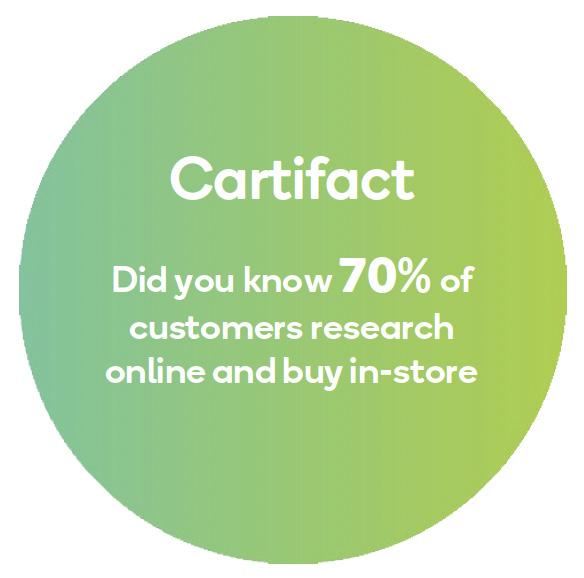
Convenience has become increasingly important – whether it is a short, specific window, or those who ‘want it now’. They are looking for real time anticipation of their
needs to help save time.
Personalised, connected, and consistent journeys across the ecosystem are key, with an omnichannel experience based on personal preferences. All aspects of customers’ online journeys need to be relevant – from content, like recipes and product recommendations, to value offers and rewards. Countdown draws on a rich base of insight to deeply understand how to create better experiences for customers – based on trends around where, when, and how they prefer to shop. Activating the digital ecosystem to deliver a seamless, connected customer experience and engage more effectively -in relevant ways and at appropriate times - is a huge opportunity for brands.
It’s important to be open to change and ready to adapt - if the last taught brands anything it’s that they need to be prepared to pivot based on changing environments and customer needs. The pace of change may not be the same, but it is crucial brands continue to tailor digital experiences to put customers first. The customer is in control. They call the shots over what they see, where they see it and how they buy it.
20 I supermarketnews.co.nz column




MADE NZ Available at vibedrinks.co.nz BE VIBETASTIC TO PLASTIC SAY NO Vibetastic ! NEW 5 flavours multipack ZERO SUGAR Natural fruit flavoured sparkling water
THE RED ONE
Pals has released the latest addition to its core range of six thirst-quenching flavours - Vodka, Red Peach, Yuzu and Soda. Affectionately coined ‘the red one,’ the new Pal is packaged in a pastel red can and combines juicy sweet notes of Red Peach with Yuzu, a Japanese zesty citrus fruit with triple-distilled vodka and soda.
The development of Pals Vodka, Red Peach with Yuzu and Soda is no exception to vigorous testing and refinement, with its delightfully unexpected flavour combination set to follow the gold-standard suite of all existing flavours.
Pals Vodka, Red Peach with Yuzu and Soda is made with premium ingredients and all-natural flavours. It is available now.

SUCCULENT DUCK
Canter Valleys' duck roast is the brand-new hero product for 2022.

It doesn’t get much tastier than this wee tray of duck joy.
The 1.2kg boneless duck roast has a delicious orange and apricot stuffing and is finished with maple glaze for the right hint of sweetness.

Pop it into the oven in its foil tray to cook; how much simpler could it be? The duck skin will crisp up, and the meat remains seriously succulent.
For more information go to www.cantervalley.co.nz or contact orders@cantervalley.co.nz

SPOOKY BLACK MAYO
In a bid to give everyone a fan(g)tastic fright this Halloween, Heinz has unveiled its very first (and very scary) black garlic mayo.


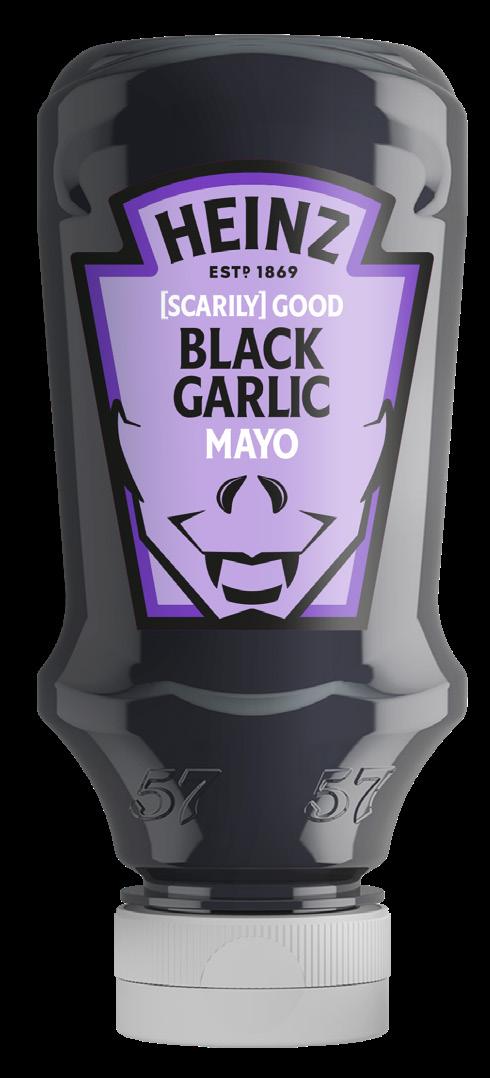
Combining Heinz’s vegan mayo with the rich, tangy, and slightly sweet flavour of black garlic that’s guaranteed to terrify (and tingle) your tastebuds, Heinz [Scarily] Good Black Garlic Mayo is the perfect spooky sauce for all your foodie treats, and tricks, this Halloween.
Arriving in three limited-edition collectable designs, the new smooth and creamy flavour will be available to purchase through the Heinz to Home website and the Wattie’s to Home website.
The new flavour is suitable for vegetarians and vegans, meaning everyone can have a [Scarily] Good time this Halloween.
NEW Heinz [Scarily] Good Black Garlic Mayo is available for a hauntingly limited time only, so hurry before they all run out.
22 I supermarketnews.co.nz
PISTACHIOS IN DARK
Introducing ‘Pistachios in Dark’, the newest 100g bar release from Bennetto Natural Foods Co. The bar features generous amounts of toasted pistachio pieces, a little salt and a unique creamy dark Samoa 60% cocoa chocolate.
“We are proud to have developed a bar featuring Samoan beans that support farmers transitioning and working towards an organic and Fairtrade certifications. We think we have a winner! This bar brings together pistachio nuttiness with a unique creamy dark cocoa profile without adding milk. This is dark chocolate -but could almost be mistaken for a milk chocolate”, said Lucy Bennetto, Bennetto’s owner and product developer.
Like all other bars, it is from single origin cocoa, produced in a carbon neutral factory and carries both the carbon neutral and climate positive certifications.
For all enquiries contact Lucy Bennetto, admin@bennetto.co.nz



STRAIGHT UP DELICIOUSNESS
Say hello to Silver Fern Farms' NEW Honest Beef & Venison Burgers with a hint of Rātā Honey. The latest addition to their Honest Burger range features a delicious blend of grass-fed beef and venison, perfectly paired with the smooth, natural sweetness of New Zealand Rātā honey.
Like the rest of the Honest Burger range, this straightup delicious burger was developed for Silver Fern Foodies and burger lovers nationwide who are serious about taste and quality.

True to their name, there are no surprises in the Honest Burgers, just good, natural ingredients that are all thriller with no fillers.
For more information, please visit, www.silverfernfarms.com.

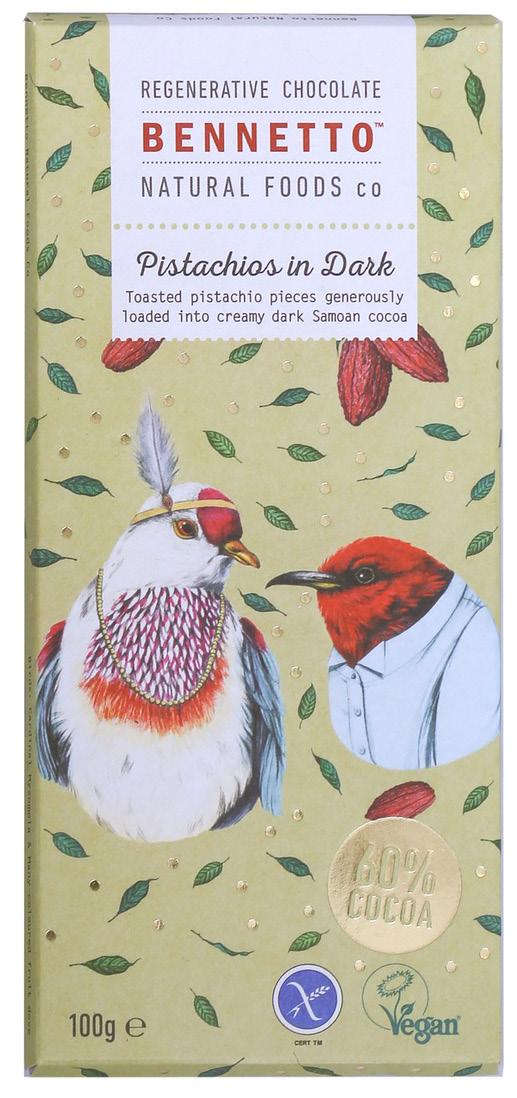
NEW REFRESHING TREAT
Bundaberg’s new Blood Orange Mini Can has less than 95 calories per serving, making it a delicious drop. Feel like mixing it up? The 200mL serve size is the perfect pour to make your favourite cocktail or mocktail.

The refreshing taste of Bundaberg’s Blood Orange Mini Can starts with real Blood Orange. Bundaberg’s Master Brewers then use timehonoured brewing methods to make every batch, which is brewed over two days.
The convenient 200ml Mini Can range also includes Ginger Beer, Passionfruit, Lemon, Lime & Bitters and Pink Grapefruit, perfect for all your adventures!
October 2022 I 23
THE ROAD AHEAD
Electric Vehicles are the way of the future. Governments worldwide are driving policies and initiatives for the adoption of EVs, and New Zealand is no different with the Clean Car Programme. As a more sustainable way to distribute goods, FMCG investment in EVs can save long-term operating expenses and, most importantly, have a healthier contribution to a business's carbon footprint. The sector is also supplying customers with charging stations to encourage the transport shift.
There are three main types of electric vehicles: HEV, PHEV and BEV. HEV or hybrid electric vehicle is the combination of a combustion engine with a small battery pack and electric motor that usually can only drive on electric power for short distances. The battery is charged on braking and deceleration. PHEV vehicles combine a combustion engine with plugin electric power. Batteries are bigger than those in an HEV and designed for overnight charging. Once the electric battery is depleted, the vehicle will run like a HEV. A BEV is a purely electric vehicle that does not burn any fossil fuels. It relies solely on the driver to plug in and recharge the battery.
There are a number of challenges that New Zealand faces in the adoption of EVs, including the capital cost and strain on the power grids.
“We would like to see Government rebates extended for at least another couple of years until the cost of buying an EV is similar to the cost of petrol/diesel vehicles. Making EVs accessible is key to encouraging greater uptake. We would also be supportive of the Government introducing an FBT (Fringe Benefit Tax) exemption on electric

vehicles to support businesses making the switch,” said Ed Harvey, CEO of Evnex.
With an increase in the uptake of consumer EV vehicles, the government has to ensure power grids are not overloaded as the nation charges overnight. Smart charging and the use of renewable energy sources, particularly home solar panels, could shift energy demand away from peak charging times.
“Making efficient use of New Zealand’s grid and power consumption will be enabled by smart technology; dynamic charging infrastructure that controls load, and software that gives consumers choice in how and when they charge. We see potential, and Z will look to trial microgrids and battery storage solutions in the near future,” said Kaye Herrick, EV Experience Manager at Z Energy
There are also concerns about national infrastructure and whether public charging should be paid or free.
“My understanding is that there is significant investment going into National Fast Charging networks as well as the likes of Z Energy proposing to install chargers in their Service Stations. We are installing
EV chargers in our business for staff to charge our EV fleet during the day when in the office, and our fleet is being replaced progressively with PHEVs. EVs are not currently suited for business travel around the country due to the lack of charging stations,” said Chris Farmer, Sales & Marketing Director, Eurotec Ltd
While there are a number of challenges to investing in EVs, the recommendation is to prepare for the change.
“For retailers, top-up charging may be an attractive service for customers, a bit like providing in-store Wi-Fi. The electrification of motorbikes and mopeds is happening faster than for cars, and retailers may want to think about providing a moped and motorbike park’ n ’charge. Likewise, as the range of e-cycles expands, customers will be looking for more space to park bigger e-cargo bikes and demanding charge ports. Retailers should also think about supporting their suppliers by providing top-up charging for delivery vehicles to keep them on the move,” said Sam Stephenson from Auckland Transport. n
24 I supermarketnews.co.nz ev
Choose VIARIS EV Chargers for smarter electric vehicle charging


Choose VIARIS Ideal for use in commercial, residential and public applications. Compatible with all Type 2 electric vehicles on the road.
Harness
Smart EV European design, quality and style
VIARIS SOLAR is specifically designed to integrate with any new or existing VIARIS UNI and COMBI+ EV chargers. Once installed, this environmentally sustainable EV solution allows you to harness the electricity generated from your PV system (solar panels).

LOAD MODULATION



VIARIS SOLAR INSTALLATION COST

The VIARIS UNI & COMBI+ EV chargers include load modulation as standard.





for easier and lower
installation. The built-in RDC-DD (Residual Direct Current Detection Device) means you don’t need to install an expensive RCCB Type B at the switchboard, you only need the standard type A, which saves you money.
October 2022 I 25
the power of Solar Energy for EV Charging!
chargers
cost of
Contact Eurotec to discuss your EV charging requirements 09 579 1990 sales@eurotec.co.nz www.eurotec.co.nz
This smart system constantly increases or decreases the charging power to the electric vehicle according to the rest of the building power consumption. In this way, you can achieve the highest recharge in the shortest possible time without exceeding the contracted power. EV CHARGER SMART BENEFITS NO EXPENSIVE RCCB’s
VIARIS
ELECTRIC VEHICLES IN LOCAL INDUSTRY
With the EV transition inevitable, SupermarketNews spoke to Countdown, Foodstuffs and Z Energy to learn what stretch of the EV road they sit on.
COUNTDOWN
Countdown’s first EV charging sites were installed in the Waikato in 2018 at the Hamilton, Bridge Street, Claudelands, St James and Huntly stores. The supermarket installed the first public EV station on Waiheke Island in 2020.

There are now 15 Countdown stores across the country with EV chargers available for customers to use, totalling 65 chargers.
“We know customers really value being able to charge their EV with us while they shop, which is why we have established an internal working group to look at how we can further expand our network of EV chargers into more communities across Aotearoa,” said a Countdown Spokesperson.
EV chargers are also available to staff members and customers to use at the Auckland Fresh Distribution Centre, Palmerston North Regional Distribution Centre and Favona Support Office.
Countdown works with a number of different companies to source EV chargers. The majority are sourced from EVNEX. The Johnsonville Countdown is fitted with Tesla superchargers, and a number of sites are fitted with chargers by WEL networks.
Across the supply chain, Countdown currently has five electric trucks for the delivery of online orders in the fleet and five dedicated charging station to support them.

FOODSTUFFS
To date, 93 percent of Foodstuffs stores offer EV charging facilities to customers. The latest in-store fast chargers are cofunded by the Government’s Low Emission Vehicles Contestable Fund and were installed by ChargeNet. The cooperative also currently has a fleet of 28 electric delivery vans utilised by New World, PAK’nSAVE and Four Square.
“With a transport network travelling over 34 million kilometres around New Zealand to deliver food and products to our stores each year, reducing carbon emissions has
COUNTDOWN EV TRUCK
26 I supermarketnews.co.nz evlocal
NEW WORLD OREWA CHARDING
STATION
become one of Foodstuffs New Zealand’s (FSNZ) most important focuses,” said a Foodstuffs Spokesperson.




At Foodstuffs North Island, the office in Landing Drive has 32 EV chargers for team members and visitors to utilise. They have also recently agreed to lease two Hydrogen Fuel Cell electric trucks in FY23, which are powered by 100 percent green hydrogen and will only emit water vapour.
Foodstuffs South Island currently have two EV trucks in the metro fleet that provide more than 55,000km of diesel-free deliveries annually. Hybrid cars have been introduced for team use, as well as a free loan for the purchase of electric bikes.


Z ENERGY
The goal for Z Energy is to make it as easy as possible for people to charge on the go, as it is to fuel up today. They were the first fuel company in New Zealand to introduce an EV charger at a retail service station.

By the end of March 2023, the company aims to have a functional charging network between Auckland, Hamilton and Tauranga that consists of 30 charging points. While also implementing chargers in a number of sites across the rest of the country.
“We recognise the need for a fair, equitable and inclusive transition, as not all New Zealanders can afford an EV,” said Kaye Herrick, EV Experience Manager at Z Energy.
Infrastructure to manage the transition to EV at Z Energy means managing queue anxiety with multiple charging points at each location, providing integrated billing options, and offering parks that are half a metre larger than the norm to ensure accessibility.
The energy company is also transitioning its own corporate fleet to EVs and is efficiently managing employee reimbursements and experience for at-home charging. n
FOUR SQUARE PIRONGIA EV VAN
PAK N SAVE PAPAKURA EV VAN
Z EV CHARGER ROLLESTON
October 2022 I 27
ELECTRIC VEHICLES IN GLOBAL FMCG
Around the world, EVs are being utilised throughout FMCG, particularly in supermarkets and grocery stores. News from these major grocery players highlights an increase in charging stations for customers and electric delivery fleets.
AUSTRALIA
Coles unveiled its first electric delivery truck with transport partner Linfox Logistics in April this year. The Fuso eCanter truck is used in West Sydney. Woolworth's first EV, Eve, was trialled in 2018 and was Australia's first 100 percent electric heavy rigid vehicle. In 2019 a second EV joined the fleet, and in 2021 a third was added; the Volvo FL Electric was one of two in all of Australia and 75 worldwide.


SOUTH AFRICA
In June this year, Woolworths South Africa announced the rollout of electric vehicles to 70 percent of its delivery fleet following a ten-month trial. Delivery vans will be utilised in Gauteng, Durban and Cape Town in partnership with logistics company DSV.
WOOLWORTHS AUSTRALIA EV TRUCK 28 I supermarketnews.co.nz evglobal
COLES ELECTRIC DELIVERY TRUCK
"We are very much looking forward to being the first retailer in South Africa to embark on such an extensive rollout of electric panel vans to support our growing online business," said Liz Hillock, Woolworth's Head of Online and Mobile.



UK
Tesco currently has the top spot for UK supermarkets with EV charges. They partnered with Volkswagen in 2018 to deliver the UK’s largest charging network, with free charging bays at 500 Tesco stores. The company also introduced its first zeroemission electric delivery truck in August this year.
“This is part of our wider commitment to addressing the environmental challenges that matter most to our customers, colleagues and communities. We want to be the leading Electric Vehicle energy provider and to support our customers with more sustainable solutions. Our EV network provides a sustainable choice for our customers, and charging while they shop is another little help to make their lives easier,” said Jason Tarry, Tesco CEO UK and ROI.
Asda, Morrisons and Lidl trail behind with the number of EV chargers at supermarkets, and the most recent partnership was between Shell and Waitrose to install chargers at 100 Waitrose stores.
USA
In July this year, Walmart announced the purchase of 4,500 EVs to expand its last-mile delivery fleet in a partnership with Canoo, with vehicles hitting the road in 2023. To date, the nation's largest supermarket, Kroger, had over 350 chargers installed across ten states, and 7-Eleven is on track to have at least 500 EV ports across 250 US stores.
EUROPE
Coca-Cola European Partners has successfully transitioned to having over half of its fleets electric in Norway, Sweden and Germany. Shell and Tesco have formed a partnership in Hungary for more than


100 Tesco stores to have charging stations installed by 2025. Coop is using an electric truck in its Rotterdam supply chain and has rolled out charging stations with Intermache in Poland. n
 COCA COLA EUROPE EVS
WOOLWORTHS SOUTH AFRICA DELIVERY VANS EV
COCA COLA EUROPE EVS
WOOLWORTHS SOUTH AFRICA DELIVERY VANS EV
October 2022 I 29
Tesco currently has the top spot for UK supermarkets with EV charges. They partnered with Volkswagen in 2018 to deliver the UK’s largest charging network, with free charging bays at 500 Tesco stores. The company also introduced its first zero-emission electric delivery truck in August this year.
WORKING TOWARDS SUSTAINABILITY IN THE FRESH PRODUCE AISLE
 By United Fresh
By United Fresh
New Zealand’s $6 billion horticulture industry has been one of the first to feel the adverse effects of climate change as significant weather events increase and rising temperatures disrupt crop patterns.
Working towards increasing sustainability in the sector is one of the top priorities for United Fresh and many of its partners as they look to ensure the fruit and vegetable supply chain meets the United Nation’s Sustainable Development Goals. Recent work by the United Fresh Technical Advisory Group (TAG) includes a number of significant projects intended to drive change in our sector.
The Reusable Plastic Crates (RPC) workstream has seen the TAG investigate the use of crates in the supply chain from field to store, looking at ways in which the industry can manage this resource more sustainably.
We continue to conduct work relating to fruit labels composition in preparation for the Government’s decision to phase out plastic labels next year. With labels essential to both growers, in terms of brand protection, and consumers, in terms of traceability and food safety, finding an effective and affordable solution is urgent.
United Fresh recently supported a Recycled Packaging Research Project initiated by the New Zealand Food Safety Science and Research Centre (NZFSSRC), which explored the current state of the recycled packaging industry in New Zealand by surveying stakeholder perceptions and developed guidelines to enable more
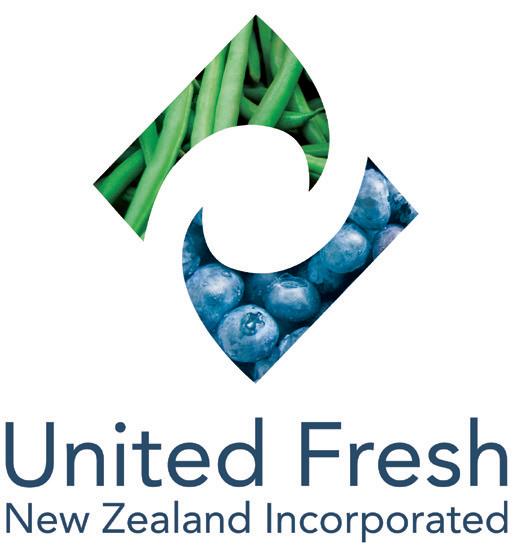
effective recycled packaging use.
The results of the project have been released as six documents which provide a very good overview of the complexity and challenges posed. We recommend anyone who is utilising recycled packaging read the detailed reports. The stakeholder perceptions and guidelines report, in particular, provide practical guidance for business.
The papers include ten key recommendations based on insights from stakeholder interviews. These can be found on the website www.unitedfresh.co.nz.
The NZFRSSC papers provide useful guidelines and analysis of the issues that using recycled packaging materials may bring. They highlight the structural issues that need to be worked on and provide guidelines for individual businesses that are seeking to use recycled packaging.
Next month United Fresh will join other members of the International Federation for Produce Standards at their Fresh Fruit and Vegetable Industry Global Sustainability Symposium.
With the almost inevitable emergence of increased numbers and intensity of rules, regulations, and standards set to affect the fresh produce industry, from growers to retailers, the IFPS Board of Directors has determined that our industry should consider how we can take a more proactive
position in the sustainability space.
It is important to ensure that the requirements of a more structured sustainability regulatory framework, and supply chain reporting requirements, take into consideration the realities of fresh produce value chains and that what they are being asked to do is feasible and adds value. During the symposium, United Fresh will be sharing the insights the TAG have gained through its many projects and discussing ways in which they can be proactive in supporting the development of sustainability policies which work for both the industry and the planet.
For further information visit Recycled Packaging Research Project here, or Fresh Fruit and Vegetable Industry Global Sustainability Symposium here
30 I supermarketnews.co.nz opinion
Authentic



Supplying quality Italian smallgoods to New Zealand supermarkets, hospitality trade and delicatessen wholesalers. Call us now for authentic quality Italian smallgoods. Granarolo New Zealand Ltd 337 High St, Boulcott, Lower Hutt 5010, New Zealand +64 (0)9 551 7410
Italian Delicacies
opinion
RETAIL DECODED
By John-Daniel Trask, Co-Founder/CEO, Raygun

WHAT NOT TO MEASURE
In our last column, we explored Google’s customer experience score as one of the best ways to measure the quality of your digital storefront. Today, I want to talk about the other side of the equation: the metrics to avoid or treat with caution.
When it comes to measuring customer experience and satisfaction, businesses have traditionally relied on self-reports and surveys, methods that are prone to bias and misinterpretation. As larger sections of the customer journey move into digital spaces, new tools have sprung up to capture information about real customer actions and interactions, quantifying how fast, successful, and enjoyable the experiences we deliver really are. By combining this objective, quantitative data with traditional data about the customer’s thoughts and feelings, we can see the full picture for the
first time.
If you’re not sure how to achieve this level of insight, you’re not alone: only 38 percent of executive leaders say their organization does well at measuring customer experience, and 27 percent say they struggle (with the rest falling somewhere in the middle). Measuring the wrong indicators or measuring too many variables can easily become misleading and overwhelming, or even contradictory. Sure, data is powerful, but only if it’s relevant, accurate, and actionable.

Now, let me preface by saying that if you are using either of the metrics, we talk about today, don’t panic — they’re not innately bad or harmful and are actually still helpful sometimes. Plus, measuring something is better than measuring nothing. It’s just that these metrics, while popular, are often overused or misapplied. Let’s see why.
AVERAGES
An average is the best way to understand where the majority stands, right? Well, sometimes. Averaging works well when your data set is clustered within a relatively small range. But when it comes to measuring digital experience, an average can actually work to conceal the reality of large portions of your customer base. Because experience signals like page load time tend to fall across a broad range, it’s easy for a few outliers to skew your average and lead you astray or for the outer values (which need the most attention) to be hidden.
At Raygun, we use the median as a better indication of where the ‘typical’ customer actually sits because your median, by definition, will show where most of your customers are.
We also consider the P99 or the quality of experience for the 99th percentile of users.
32 I supermarketnews.co.nz
(The 100th percentile is better left out of the equation, as this is where total timeouts and bots tend to throw the numbers out wildly). Once you’ve set the upper limits of what your team terms an acceptable customer experience, your P99 shouldn’t exceed this. Compared to your ideal time, this is going to be slow, but you still want to keep this closer to five seconds than 25. Tracking your P99 ensures that even the laggiest, buggiest, most frustrating experiences you deliver are still within reasonable parameters. Keeping your P99 in range acknowledges that we can't guarantee perfection every time, but we can still keep ourselves honest.
NET PROMOTER SCORE




NPS remains deeply ingrained in many businesses, processes, and industries. It’s the most popular customer experience metric and continues to have valuable uses. But
NPS has become increasingly controversial, and Gartner has predicted that 75 percent of organisations will no longer use it to measure customer service and support by 2025.

I can’t say whether that will come true — there are good reasons why NPS became an industry standard, and a strong focus on customer feedback has raised standards and reminded businesses why they exist (hint: it’s the customer). However, many of us over-rely on the famous score, and in doing so, overlook the risks and misrepresentations NPS can introduce. NPS is flawed in a number of ways; it amplifies the most extreme user experiences, so isn’t representative of the majority. It can be challenging to accurately attribute or improve NPS scores, because better scores could be a matter of working on your product, service, price, or even just changing the market you’re selling to. You could deliver a slow and buggy website experience followed by an excellent support interaction, and still score a nine based on the last contact the customer had. If you’re only relying on NPS in that scenario, you’ll never flag or address the bug, and other customers who encounter the same issue might just quietly leave.
NPS is a number, but it also gathers qualitative data, and this can be one of
its most productive uses, whether it’s relaying service feedback and giving upsell opportunities to your customer-facing teams, sharing feature requests with your product team, or passing promoters to your marketing team as potential testimonials. In short, NPS remains relevant as a large-scale, subjective indication of how your customers are feeling, giving them the chance to tell you what’s on their minds. But it doesn’t stand alone as an objective measure of experience, particularly for your technical teams.
SO, WHAT ELSE SHOULD I USE?
Nobody likes to hear problems without any suggested solutions. Raygun customers often ask us about useful and clear ways of measuring experience, and it’s a question we’ve given a lot of time and attention to. To help businesses find answers, we’re currently putting together a guide to digital experience monitoring, sharing ten metrics that can help you see through your customer’s eyes. If you’d like a copy, just fire me an email at jdtrask@raygun.com, and I’ll make sure you’re on the list to receive one. Otherwise, I’ll share more on this topic with you in this column soon.
October 2022 I 33
...only 38 percent of executive leaders say their organization does well at measuring customer experience, and 27 percent say they struggle (with the rest falling somewhere in the middle).
Measuring the wrong indicators or measuring too many variables can easily become misleading and overwhelming, or even contradictory. Sure, data is powerful, but only if it’s relevant, accurate, and actionable.
storeofthe month IE PRODUCE TAKAPUNA
Lowyim, STORE OWNER
IE produce was ahead of its time when it opened in West Harbour, Auckland, in 1989.
As a store that champions health, well-being and organic produce, it has sat on the corner of Barry’s Point Road and Anzac Street on the Northshore since 1994.
THE ORGANIC ETHICS
IE Produce is New Zealand's first BioGro Certified Organic health food store, gaining the certification in October of 2000. This means all the grocery products are produced without synthetic pesticides, herbicides and fertilisers, and there is no genetic modification or antibiotic exposure. Organic values also flow through the supply chain, in how the products are transported and handled.
“We’re serious about organics. Our store is inspected annually to ensure we are going above and beyond to protect organic integrity before the certification can be renewed,” said Joyce Lowyim, the owner, operator, boss, chief worker and shelf stacker at IE Produce.
Organic Produce is a passion for IE produce as it is healthier for humans and supports a sustainable agricultural system.
It does, however, mean that customers are paying more for organics due to the strict farming and production standards that need to be met.
To ensure customers are making informed decisions about grocery products, Lowyim is continually learning and educating herself to be able to pass on information. She is a Certified Body Ecologist - trained under Donna Gates, the founder of the Body Ecology diet, which operates on seven health and healing principles that create a robust inner ecosystem. She is also a Certified Integrative Nutrition Health Coach - trained via IIN Integrative Nutrition in New York. She can help customers nourish, heal and thrive in all aspects of their lives.
HISTORY BEHIND THE STORE
Owner Joyce Lowyim grew up in a small town in Whakatane, where she and her siblings worked in the family produce store. She remembered standing on an apple box to reach the counter and serve customers.
As a Chinese immigrant, her dad had strong beliefs surrounding natural healing remedies that instilled her lifelong knowledge and inspiration.
After leaving school, Lowyim jumped into working more in the family retail and wholesale business, gaining all the required truck licenses to do the long-haul produce runs between Rotorua, Hamilton, Pukekohe, Auckland and Hawkes Bay. She could be found unloading pallets with the fork hoist or negotiating bulk prices with growers at produce markets. Her first role
outside the family business was at The Fruit Shed Northcote.
Her husband and business partner Phillip had an agricultural background and was a produce manager at New World Papatoetoe before moving to Vege King West Harbour. After six months, he was offered the opportunity to purchase the store, and the pair's combined knowledge bought IE Produce to life in 1989.

The second IE Produce store was opened in Takapuna in 2000 and Lowyim is incredibly proud of how the store has grown.

“Owning our own business came with much responsibility, as well as a great feeling of achievement and certain amounts of freedom. It certainly involves continual learning and teaches you a wide range of skills. The sacrifices, in the beginning, to get the business up and running are worth the joy that comes further down the road, and it's great to see the business maturing.”
A TYPICAL DAY
IE Produce has a valued team of 12. A combination of senior staff members who have been with the store for 20 years and university or secondary school students working part-time. The senior staff members bring knowledge and a deep understanding of the business culture, while the younger staff members all bring their own unique skill sets, injecting energy and fresh ideas into the team.
“Every day is a great day. Every day is different. Every day has its challenges.”
Before opening the store, Lowyim ensures
34 I supermarketnews.co.nz
Joyce
the produce is prepared and displayed on the shelves. She checks and stacks the fruit and fresh bread, orders more chilled or frozen products and then goes over the pantry items. Online orders are fulfilled and couriered.

As the store opens, customers are welcomed inside, where they often want to chat. Lowyim is always ready to prioritise her customers, giving advice on brands and offering substitute products while being honest and tolerant.
“The people, I love the people. Our customers are awesome. I love interacting with and being around them daily. Yes, I get to sit for breaks, I get to sit and do stuff in my tiny office, but when I’m needed on the shop floor, I’m there.”
LOOKING INTO THE STORE
Functional Foods is the best-selling category at IE Produce - foods that provide health benefits beyond their nutritional value. There is an incredible variety at the store, including vitamins, minerals, fibres, whole foods, fruit and veggies, whole grains, beans, berries and dairy products.
The quote, “Let food by thy medicine and medicine by thy food,” from Hippocrates, is something Lowyim lives by.

While most of the IE Produce customers are local, a number of customers travel from the city or outer Auckland for specific products and Bio-Gro Certified items. There is also a high uptake of online shopping at www.ieproduce.com for customers that can’t physically visit.
Lowyim also runs Nutrition workshops
and seminars for customers, with suppliers presenting educational information, giving demonstrations and supplying product tastings. They are run fortnightly or monthly on Wednesday evenings from 7-9 pm. Entry is a gold coin donation, and over the years IE produce has been able to donate $28,000 to the North Shore Hospice because of it.
“As a resident of Takapuna, IE Produce is an absolute Godsend when it comes to
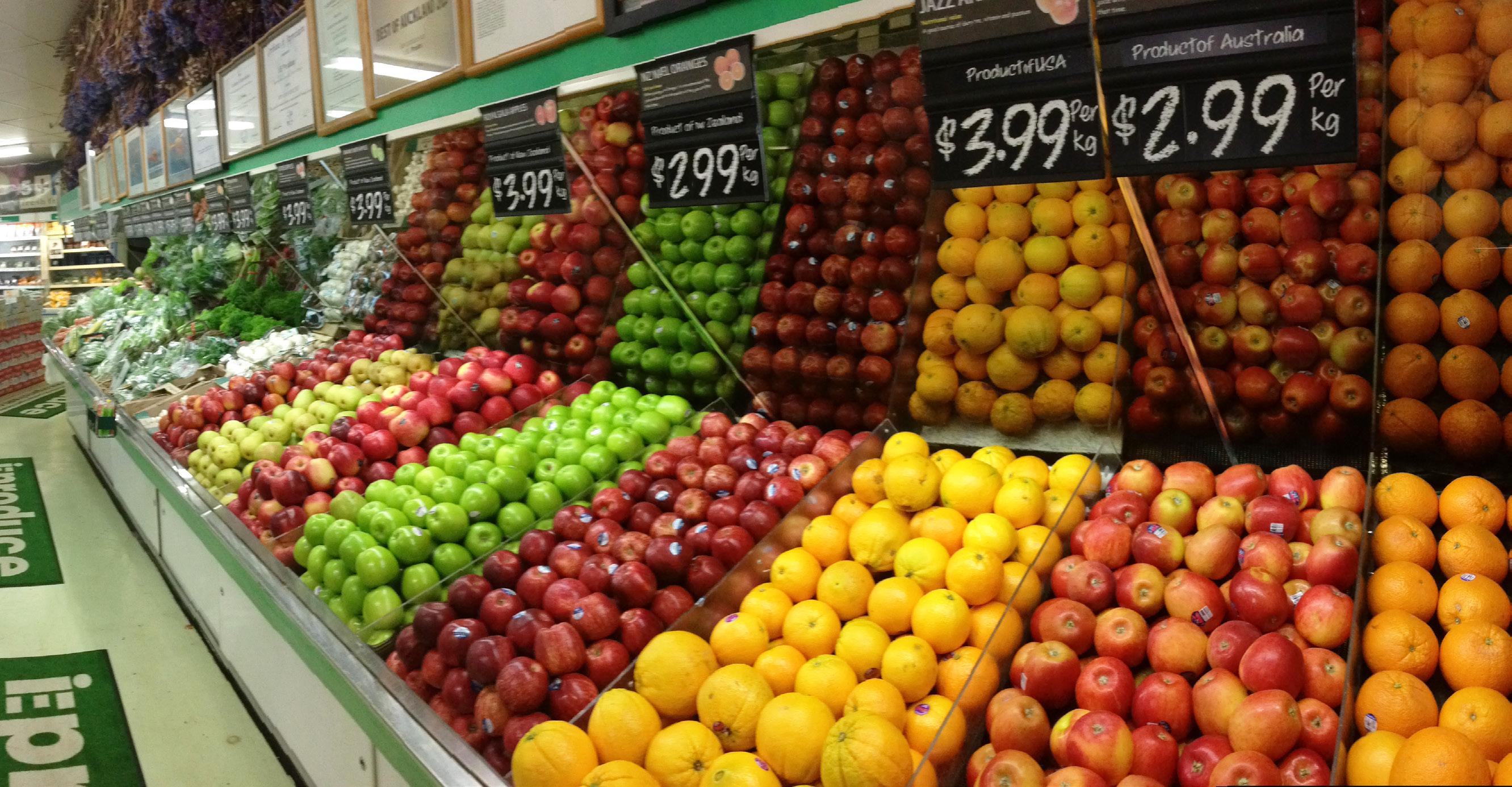


conscious artisan products, brands, and fresh foods. Because of its bespoke offerings, I find the store fosters a really cool and diverse community of interesting people, many of whom I have had the pleasure of meeting in the aisles over the years, as well as the staff. I always recommend IE to my friends and peers, especially when they are looking for conscious alternatives that you can’t find elsewhere,” said Karn Hall, an IE Produce Customer. n

October 2022 I 35
storecheck
TUCKER FRESH KINROSS IGA PERTH, WESTERN AUSTRALIA
Tucker Fresh Kinross IGA is a speciality food and fresh produce provider located in Perth, Western Australia. Around 20,000 customers walk through the doors of the Kinross store each week, drawn in by the impressive British Foods section, local produce and the deli.
“W
e’ve got an amazing team that has been with us since the store opened over 15 years ago, meaning they know so many of the customers,” said Poojan Shah.
Poojan Shah is the Head of Operations for the Tucker Fresh Group of IGAs. Born and raised in Kenya, he moved to Australia with his family at age ten. Before joining the Tucker Fresh family business, he worked as a management consultant at KMPG Perth. Shah remains passionate about the grocery industry due to his love for food, people, and an independent grocer's ability to service customers at a real, local level.
The store's unique selection of international food products is a key feature. With a particularly high demographic of British customers in the area, Shah daresay the store has the most extensive international selections in Perth.


“We definitely draw customers in with our amazing British section, meat that is freshly cut by our in-house butchers and local produce sourced from the best growers.”
Convenience foods served through the stores Deli and Tasting Station are an innovation Shah is particularly proud of. Meals are developed by the Tucker Fresh Head Chef, who has an array of hospitality industry experience and is classically Frenchtrained, having worked in fine dining restaurants across the world. Convenience Deli creations are of the highest quality, featuring hot meals such as butter chicken, lasagne, cottage pie, wedges, roast vegetables and more. Breakfast burgers, sandwiches, rolls, pastas, salads, and roast meals are ready for on-the-go, alongside fresh meat cuts and a Tasting Station that features live tortilla
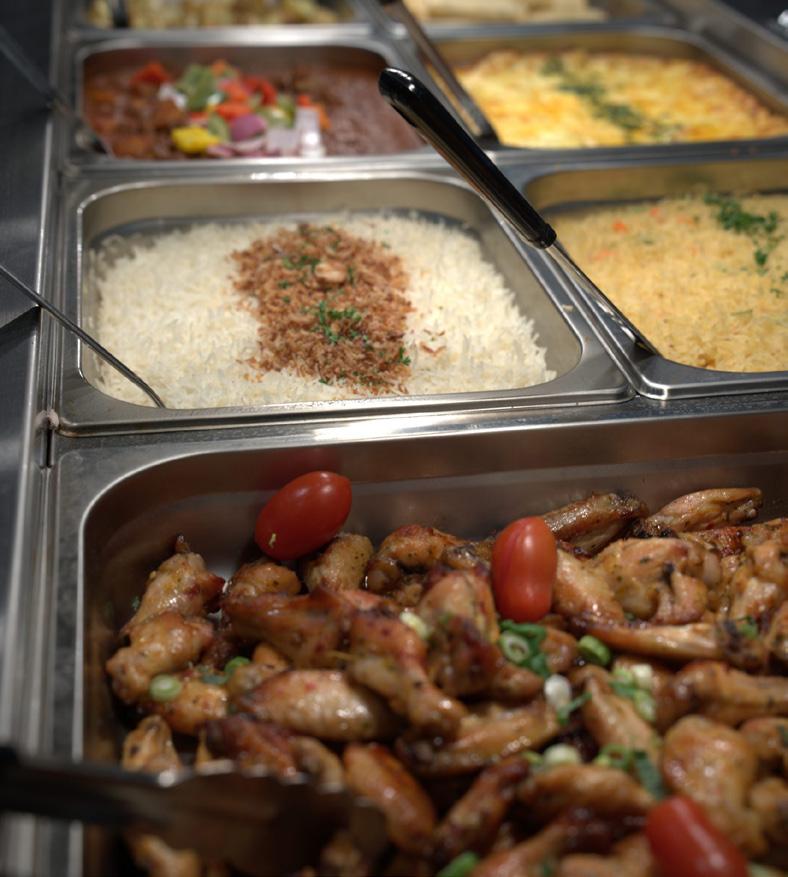
making and orange and cold press juice machines.
A recent update in the Kinross store took place in the fresh department. The Contronics Dry Misting system circulates mist around produce and ensures there is the retention of freshness, colour and nutrients. Round, modular display shelves from Sigma were installed to showcase the variety of produce on offer. The department also received a new layout and lighting that have entirely changed the in-store experience.
“We’ve noticed that our bananas are much fresher than before, and the fresh department sales have already grown,” said Shah.
Tucker Fresh Kinross IGA plays a major part in its community.
“We have been around for a while now, and absolutely love being part of the Kinross community. We’ve sponsored surrounding schools, sporting events, and other community causes over the years and are always looking to give back.”
36 I supermarketnews.co.nz
n
goodforplanet
GOOD FOR THE PLANET
The expanding climate crisis means sustainability is now the main concern for every organisation. Many businesses’ sustainability objectives are currently focused on green energy, decreasing food waste and circular packaging.

"In New Zealand, we have never looked at sustainability and environmental issues as much as we have now. The younger generation is far more aware of environmental issues and strives for solutions for sustainable and eco-friendly products,” said Teri Nichol, Co-Founder of Nichol Development & Distribution Ltd, supplier of Green Spider Pallet Wrap.
Consumers often do not see sustainability work in the supply chain; to them, price remains king. Consumer New Zealand’s Sentiment Tracker ranked sustainability behind concerns about the pandemic and economic pressures - 59 percent of consumers reported price being a major consideration for purchases, and eight percent said sustainability.
However, the Intergovernmental Panel on Climate Change (IPCC) has noted the time for action is now or never, and 66 percent of kiwi consumers are still concerned about climate change, even if it is not the main influence on purchase decisions.
“We are at a crossroads. The decisions we



make now can secure a liveable future,” said Hoesung Lee, IPCC Chair.

Implemented sustainability measures need to be communicated clearly and done with integrity. Initiatives must not be viewed as Greenwashing.
GREENWASHING
Greenwashing, also known as the ‘green sheen’, is a way of advertising or marketing environmental and sustainability claims that are not followed through or seen as being surface level. Businesses can fall into this trap by misleading packaging, fake certifications, and a lack of information. Avoiding greenwashing means remaining transparent and backing up claims.
“It’s all very well to say you’re committed to the environment, but what exactly are you doing to help improve it? At the end of the day, it doesn’t matter if you start small. The important thing is you commit to reducing your impact and ideally support charities in New Zealand rather than cheaper options overseas,” said Melanie Seyfort, Head of Marketing and Partnerships at Project Crimson Trust. n
October 2022 I 37
MAKING A DIFFERENCE ONE TREE AT A TIME
Trees That Count with Project Crimson Trust
Project Crimson Trust is on a mission to actively connect New Zealanders with nature and contribute to healthy and sustainable ecosystems. Its programme Trees That Count wants to see millions more native trees planted in New Zealand. Different from other charities, Trees That Count raises funds through its open marketplace rather than with typical sponsorship arrangements.

The open marketplace was New Zealand’s first for native trees. Funds are donated and then matched to different planting groups around the country to support the restoration, regeneration and protection of New Zealand’s native biodiversity. Over 900 businesses are actively involved with Trees That Count, ranging from large corporates to small businesses across every sector. FMCG brands recently involved include Colgate-Palmolive, Herbal Essences by P&G, Ecopack, and The Collective.
“The biodiversity and climate crisis is too large for us to have exclusivity within different sectors. For that reason, we often have competing brands who are actively funding trees. Any business, no matter how big or small, can design a partnership with us that suits them and their goals,” said Melanie Seyfort, Head of Marketing and Partnerships.
Ecopack is a great example of a business
that has worked with Trees That Count. Founders and husband and wife team Jas and Simren Kohli have funded 2,000 native trees since becoming a supporter in 2019 across ten different planting projects. Among the supported projects is Blue Orb Charitable Trust which works tirelessly to give New Zealanders the chance to see Kiwis at the historic site in Whangaruru North Head. Funding 500 native trees per year has earned Ecobags (The company behind Ecopak) the ‘Trees That Count Committed To Climate Kahurangi’ mark that is proudly worn on a selection of their customerfocused products.
“The nice thing about it is it is local, and we really wanted to influence something in our own backyard. Trees That Count is one of the more recognisable causes, and it has a great reputation and great awareness in New Zealand. First and foremost, supporting native tree planting was something we wanted to do, not necessarily something we
38 I supermarketnews.co.nz good
forplanet
needed to do. But having the Committed To Climate mark on our products is a valuable reinforcing tool to show our customers that we’re doing something good for the environment,” said Jas Kohli. Since its launch in 2018, Trees That Count has fundraised for more than 1.35 million trees, supported over 1,000 planting projects, and worked with over 27,000 funders and planters.






For businesses interested in starting or adding to their sustainability efforts, there are a number of ways to do this. Fund trees from the business itself, whether it be a donation per product or a specific campaign, it is completely designed by the company. Say thanks to suppliers or staff with native tree gifts, $10 towards a tree is much kinder on the earth than many other gifts at the same price point. Getting started is easy. Check out the options at www.treesthatcount.co.nz/businesses n

October 2022 I 39
We really wanted to influence something in our own backyard. Trees That Count is one of the more recognisable causes, and it has a great reputation and great awareness in New Zealand.
PLAN TO CUT BACK ON PLASTIC WASTE
Minister for the Environment, Hon David Parker, has announced funding for projects that will cut plastic waste. Industry organisation the Packaging Forum will also be provided funding to develop a two-year regulated plastic packaging stewardship scheme.

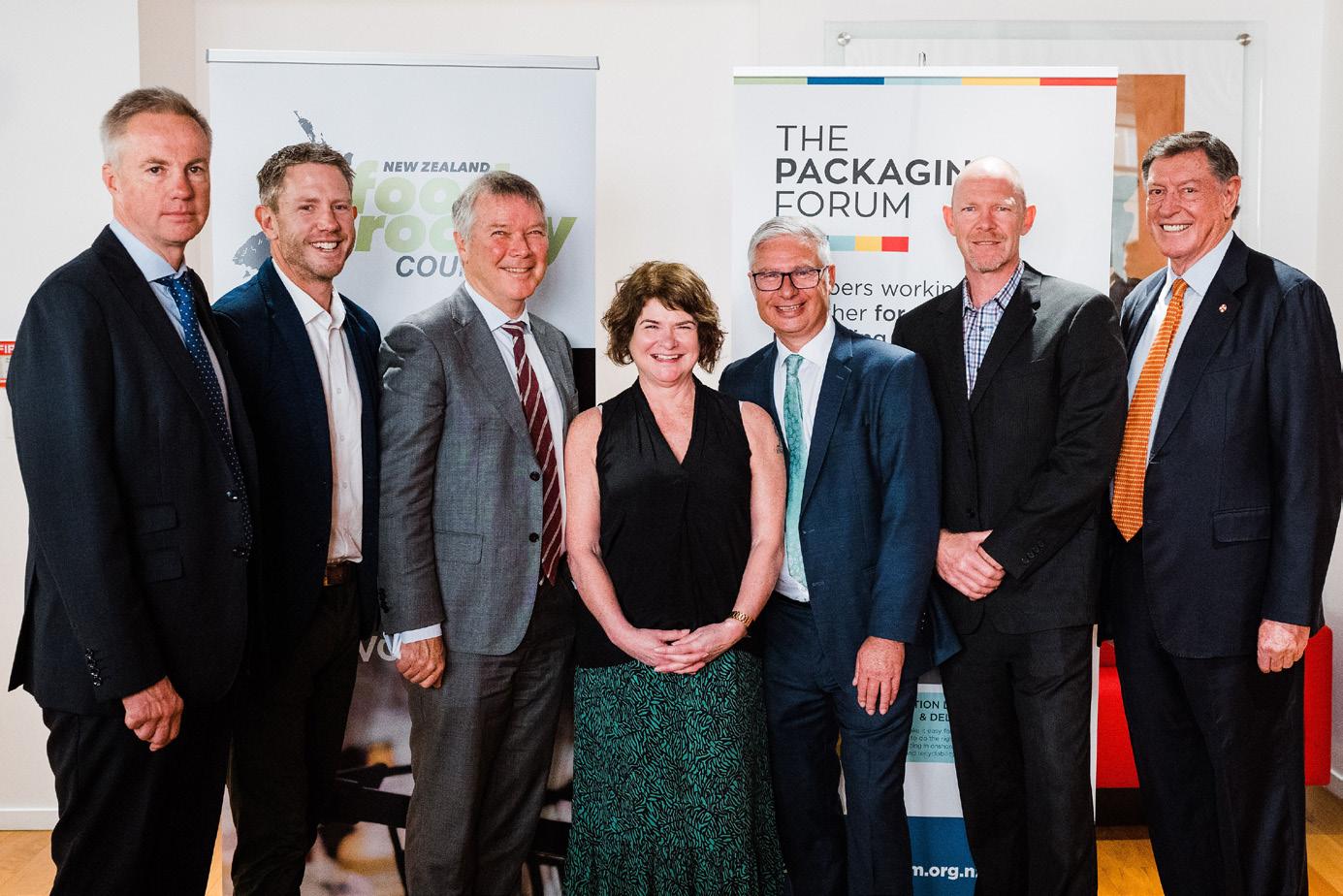
“Today, I am announcing the first four investments to be made from the $50 million Plastics Innovation Fund, which was set up last year and implemented a 2020 election promise,” said Parker. n
Click to read more
EXTENDED SINGLE USE PLASTICS
BAN
The New Zealand Government has continued its phase out of plastic with The Plastic and Related Products Regulations 2022 coming into force on October 1, prohibiting the sale and manufacture of certain single-use and hard-to-recycle plastic items.
Plastic cotton buds, expanded polystyrene food and beverage retail packaging (e.g. foam takeaway containers or some instant noodle cups), and PVC food trays and containers for meat, produce, and baked items are among those banned as part of a three-year progressive phasing out of the most problematic plastics. Work towards phasing out problem plastics and reducing waste was part of the cooperation agreement between Labour and the Green Party after the 2020 election.
This is the first ban since single-use plastic bags were banned in 2019. n
Click to read more
UPCYCLED CLEANING SOLUTIONS
Filta knows cleaning. With a can-do attitude that reflects quality, transparency and partnership, the company has been in the New Zealand cleaning landscape since 1977. The Filta Ultraclean Upcycled Microfibre cloth is a modern cleaning solution that aligns with these company values.

Over 75 percent of the premium Microfibre utilises upcycled textiles, resulting in a unique polyamide and polyester fabric blend.
The sustainable solution takes fabric offcuts that are normally destined for landfill to produce a cloth with the same cleaning power as brand new material.
Filta’s Microfibre cleaning cloths can produce sparkling results with water alone. The super absorbent material magnetically attracts and traps even the smallest dust and dirt particles. There is a reason Microfibre is the only choice for hospitals and aged care facilities.
Ultraclean Upcycled Microfibre cloths are
long-lasting and suitable for upwards of 200 washes. The sustainable cloths come in three variations; All Purpose, Glass and Kitchen/Bathroom.
Look no further than a sustainable cloth that boasts premium cleaning power. n
40 I supermarketnews.co.nz good
forplanet
Iti started at Ecostore in 2007 as a research and development manager.

Fifteen years later, he is the R&D Director for Ecostore and Chantal Organics and a stakeholder representative of Environmental Choice New Zealand. Understanding packaging challenges from product compatibility, user experience, manufacturing, and recycling perspectives allows him to work effectively in these roles.

“I use my technical skills to contribute to our purpose whilst feeling good about the work we do. I am particularly proud of my small team of chemists, led by the amazing Sherry Cheng.”
Iti lives in Helensville, so a typical day at Ecostore starts with a commute into Auckland city. He is responsible for developing new products, continuously improving the current range and sourcing high-quality, ethical suppliers. Living out of the city means he can come home and fit in a surf before dinner.
“I think I’m lucky to work at ecostore, and I’m particularly grateful to Malcolm and Melanie Rands and Peter and Pablo

The inspiration for innovation at Ecostore can come from the team, global megatrends, thought leaders, competitors and customers. Nothing is easy in the innovative green space, there are always challenges, but Iti and his team face them with creative thinking. He loves adopting the ‘less is more’ concept that has more value in smaller packages such as pods, tablets or concentrates. An innovation he is particularly proud of is Ecostore’s sugar plastic.
“The burden placed on people and the planet will only lessen through widespread adoption of smarter, newer formats and consumers heading down the refill route. The success of our 200+ refill stations globally is a case in point.”

Customer input in the R&D process is growing daily. People want to know more about the ins and outs of products. The most common questions Iti finds include: Is this going to be safe to use on my skin, on my hair, on my children? Is it going to

leave residues in my clothes? What's it going to do to my washing machine? What will it do when the wastewater goes out of the pipe? Consumers want to know more and trust that their products are appropriately managed in every aspect.
Iti can see enzymatic ingredients playing a considerable role in the cleaning category moving forward. The team at Ecostore are currently working on high-performing laundry products that use plant-based ingredients and powerful enzymes to deliver performance in tiny doses. Some developments are not too far away that use tame microorganisms to eat soiling on dirty surfaces - Imagine using ‘bugs’ to clean your home.

When not innovating, Iti can be found working on his five-acre block in Helensville.
“Apparently, it’s called a life sentence rather than a lifestyle block; lucky I love working the land so much that it’s never a chore.”
In his spare time, he is also a volunteer firefighter. n
“From an early age, I was always interested in how things worked below the surface. How my career has played out now makes sense to me!”
Kraus for choosing me to play a significant role within their amazing brand.”
October 2022 I 41
The burden placed on people and the planet will only lessen through widespread adoption of smarter, newer formats and consumers heading down the refill route. The success of our 200+ refill stations globally is a case in point.
Huia Iti, R&D DIRECTOR, ECOSTORE
20
minutes with
businessprofile
Storelink has been successfully building brands and providing cost-effective sales and merchandising retail service solutions to the fast moving consumer goods industry for 35 years.


BUILDING BRANDS “O
ur dedicated sales and merchandising team have worked tirelessly over the last two years supporting retailers and suppliers to maintain brand availability through a period of extraordinary industry disruption and store staff shortages,” said Tony Puppyn, General Manager.

“Merchandising job compliance rates during this period exceeded our client's expectations which was simply incredible and a testament to our teams’ commitment.”
“We continue to invest and grow capability. In association with Insightful. Mobi, we’ve launched an industry-leading merchandising CRM system called AIM. It’s our largest IT investment in ten years. Our partners will see benefits such as more efficient job loading and deployment, faster
response times, integration opportunities and live real-time reporting options.”
The Storelink sales business continues to go from strength to strength. It has been built over the last seven years and has all the systems, tools, and processes required to exceed partner expectations.

“We recruit highly experienced talent that fit clear competency requirements, and we allow them to perform at their best within a high-performance framework.”
The industry now enters a new normal, and regardless of the economic and industry challenges, Storelink is truly excited about the opportunity to add value to suppliers and retailers alike. If you would like a refreshing insight into how Storelink can add value to your business, then visit Storelink’s website (www.storelink.co.nz) and connect for an obligation free chat. n
42 I supermarketnews.co.nz To discover how Storelink can add value to your business, check out our website and connect: w w w storelink co nz P: +64 9 475 9039 | E: info@storelink.co.nz | W: storelink.co.nz Our Ser vices • Key account management • Field sales • Merchandising • Store audits and compliance checks • Display builds • Planogram execution • Customer services • Logistics • Point of sale management and co-packing We are a Sales and Merchandising brand building partner, providing service solutions to the fast moving consumer goods industry for 35 years. Proudly locally owned and operated with an incredibly passionate and professional team, we offer a considerable range of service solutions. Tony Puppyn, GENERAL MANAGER, STORELINK


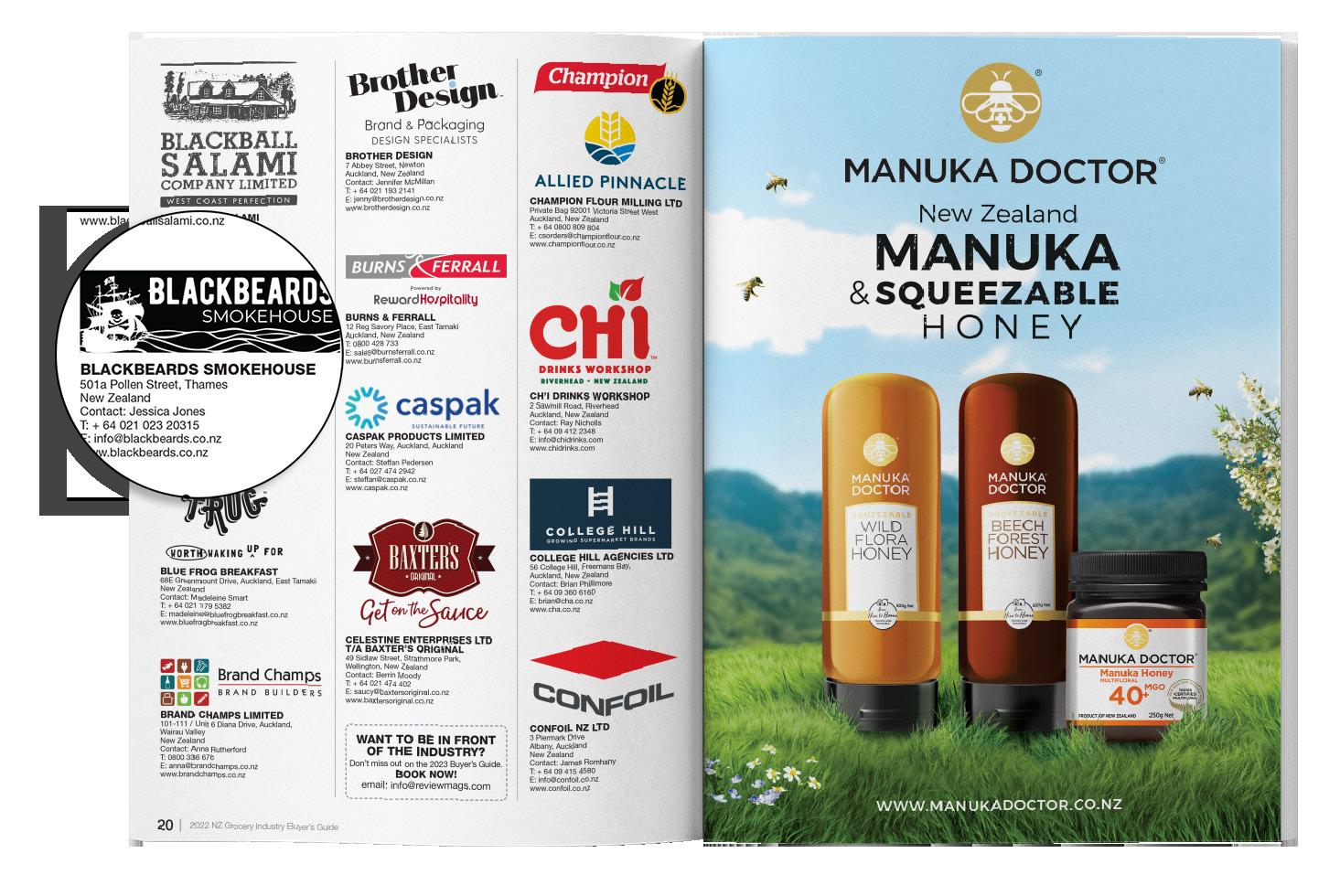

2023 buyer's guide 2023 buyer's guide BOOK YOUR SPOT NOW! BOOK YOUR SPOT NOW! email sales@reviewmags.com
@hometakeaways
FAKEAWAYS PART ONE
Fakeaway (noun) is a homemade meal intended to replicate takeaway food ordered from a restaurant.
The pandemic forced consumers to cook at home as restaurants and takeaway outlets closed. For those that already enjoyed cooking, it provided a time of experimentation and innovation with new recipes. As an advertising means, a number of food service operators promoted traditional recipes on social media platforms to keep customer interest; Ikea shared its famous Swedish meatball recipe, Mcdonald’s shared the secret to its Sausage & Egg McMuffin, and Disney released its Frozen Pineapple Treat or Dole Whip recipe. In 2020, the world cooked an average of
6.7 meals at home each week. New Zealand saw an average of 6.5 meals in 2019 and 6.6 meals in 2020 cooked at home. PostPandemic, it was reported that 61 percent of the global population would continue to cook more meals at home, even as restaurants and takeaway outlets reopened. This mindset is most prominent in the Millennials and Generation Xers.
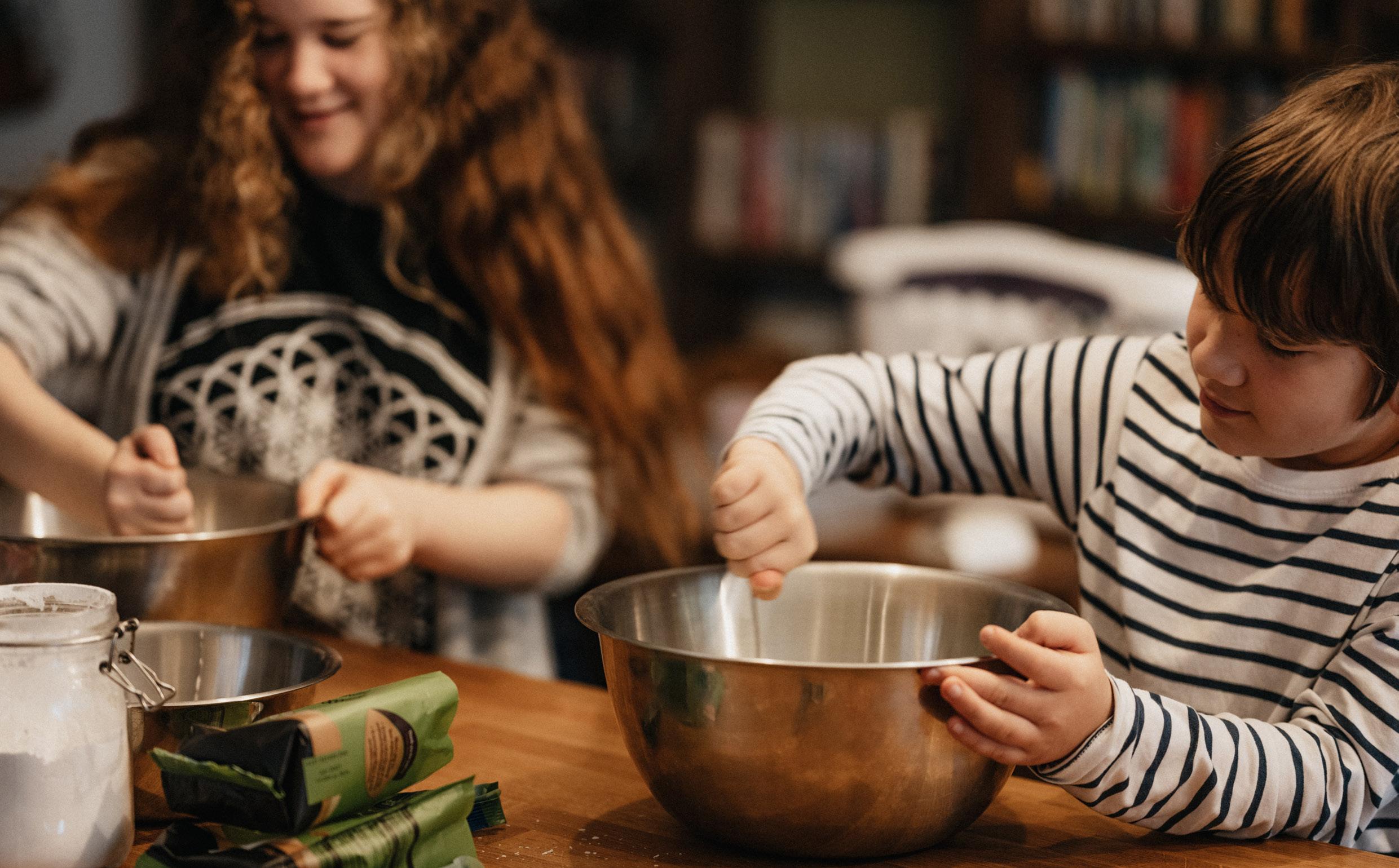
The rising cost of living is something else set to continue the trend of cooking at home. Food inflation was the highest in 13 years, sitting at 7.3 percent for Q2 of 2022 in New Zealand. When taking into consideration rising ingredients, labour and delivery costs, it is no surprise that the cost of restaurant meals and ready-to-eat food prices have increased by 6.5 percent. When families are restricting discretionary income, the supermarket becomes a place to splurge; customers are more likely to spend $5 extra on the ‘premium’ burger patties that will feed the entire family than the extra $2 on one takeaway burger and still have to buy three more burgers plus a delivery fee.
“I think the rise in living costs is the top reason people are so interested in fakeaways at the moment, especially when I break down the cost per serving. This is what catches customers’ eyes. They are able to quickly compare my costs to how much they are spending on store-bought takeaways,” said Katherine Lynch, founder of The Daily Menu, the subscription meal and recipe plan service.
On the back of the fakeaways name, online platforms across the globe are promoting recipes for the type of at-home cooking; Jamie Oliver, Recipes.co.nz, BBC Good Food and Taste South Africa all have dedicated Fakeaway website tabs. The NZ Herald has recently started an article segment called $15 Fakeaway Friday. Many supermarket sites have dedicated fakeaways recipe sections; Tesco’s 30-minute Fakeaways, Woolworth’s Fakeaway Recipes, New World, Ocado and Aldi all have Fakeaway recipes available for customers.
In the last 12 months, the term Fakeaway has been most popular in Google searches from the UK, followed by Ireland, Australia and then New Zealand. Canada, India, Germany and Vietnam have had a small amount of interest, however, the term has not caught on in the USA. The most common trends within the realm of fakeaways are vegan and low-calorie meals. Salt and chilli chicken, KFC, korma, honey chicken and naan are all popular specific recipes.
Salt and chilli chicken, or the fakeaway dish the word is fascinated with, is a lightly battered chicken often served on a bed of rice or with stir-fried vegetables and seasoned with a Chinese salt and chilli spice mix.
“Curries and burger recipes would be my most requested fakeaways, both of which can be made a lot cheaper at home and delicious recipes that don’t need to be complicated. Keep it simple, and people are much more likely to give it a go at home,” said Lynch.
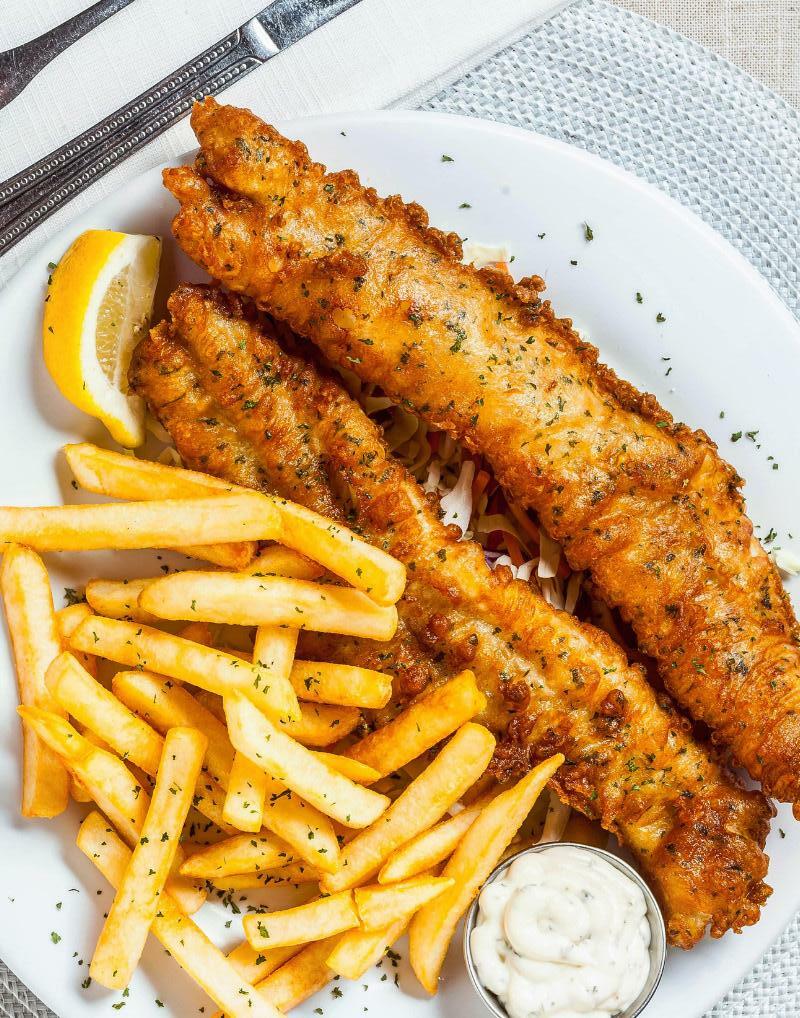
44 I supermarketnews.co.nz
n
Romano’s Food Group Ltd was established in Christchurch nearly 50 years ago. After the devastating manufacturing fire in March 2021, Romanos Food Group will have its brand-new building operational in October 2022, relaunching the Chilled Romano’s, DaVinci’s Pizza and the Frozen Chicago Pizza Company brands back instore.
Since the fire, the manufacturer has been constantly humbled by the support of customers both at the head office and store level, who have supported them on their journey to get Chilled Romano’s, DaVinci and Frozen Chicago brands back instore.
“We have had regular emails from our consumers looking for us in-store in the last 18 months whilst we rebuild the new site, and now can advise they are just a few weeks away from being able to purchase from their local store once again,” said Brad Kirkpatrick, Romanos Food Group Managing Director.
“We’re looking forward to delivering the pizzas we’re so passionate about, with our team, to the local and export markets, as well as the future opportunities that we will get in the new purpose-built facility, which has brand new machinery,” he continued.




The customer and consumer opportunity






in at-home takeaways has never been more apparent, with sales driven away from outof-home experiences and towards in-home consumption after the nationwide lockdowns and traffic light settings.

Romanos Food Group is able to fill the fridges, freezers and stomachs again, as the Christchurch-based Foundry Drive site will be able to manufacture 50,000 units of Chilled Pizza, Pizza Bases and Frozen Pizza daily. Enabling the brand to re-engage in the market share position it had prior to the factory fire.
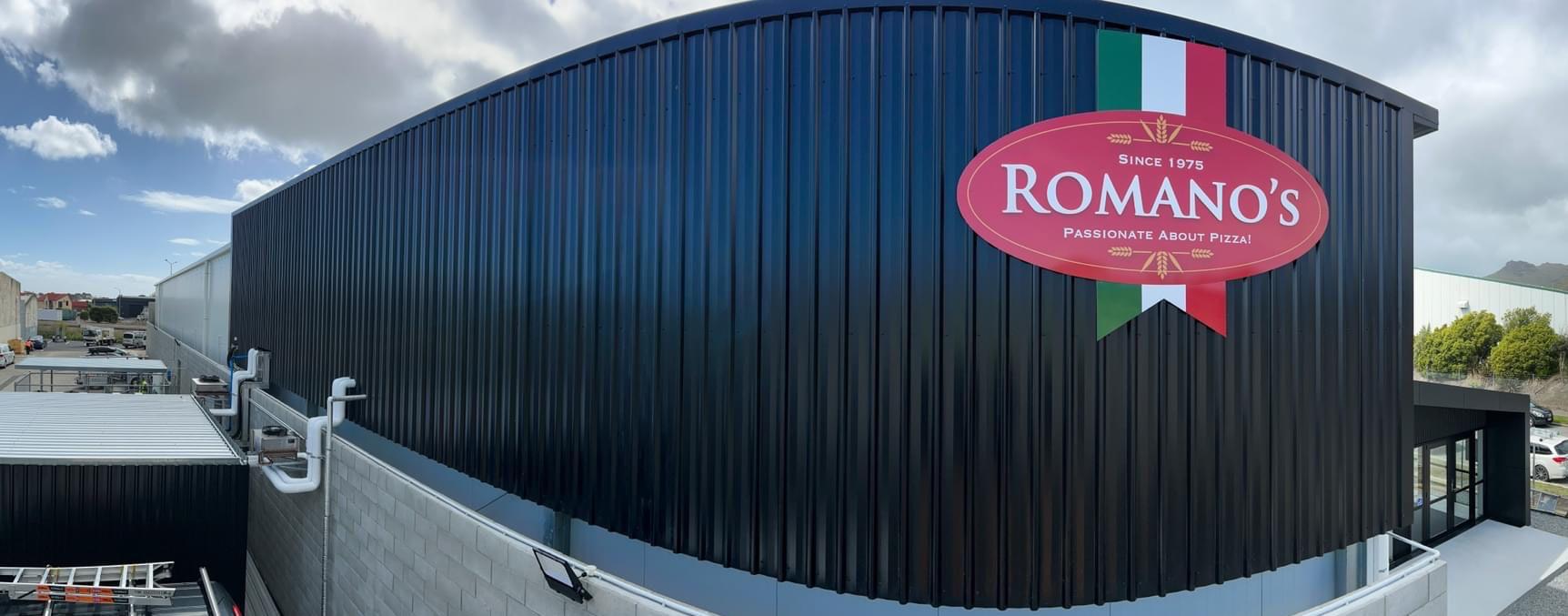
“We are also looking forward to launching some new Chilled Pizza flavours to continue our innovation and align to the trends and insights of convenience food that will significantly drive sales and grow the Chilled category back to its $35M value.”













For more information, contact the Romano Food Group on 0800 74 99 22 or email salesupport@romanos.co.nz n

BIGGEST PIZZA MANUFACTURER RETURNS October 2022 I 45 Established in 1975, Romano’s is a Christchurch-based, 100% family-run, Kiwi-owned business that has grown into one of New Zealand’s leading manufacturers of supermarket branded Chilled & Frozen Pizzas and Pizza Bases. Romano’s is passionate about delivering delicious and authentic quality pizza made from traditional recipes with quality ingredients that all families can afford to enjoy. The Romano’s Difference To ensure you have the best range of Chilled & Frozen Pizzas instore contact salesupport@romanos.co.nz or call 0800 PIZZAA (0800 74 99 22) for more information. RCG0064 FMCG Magazine Advert.indd 1 9/09/22 2:28 PM
KIWI'S
fakeaways AT-HOME ASIAN FUSION
KUNGFOOD offers a range of authentic, restaurant quality, Asian Fusion food, made right here in Godzone. KUNGFOOD frozen Dumplings, Steam Buns and Meals are a clever fusion of popular Kiwi flavours and ancient techiniques. Experience Asian Fusion food so tasty, it will give your taste buds a karate kick! The range is quick and easy to prepare and provides consumers with a selection of products to re-create their favourite yum cha restaurant experiences from the comfort of their own kitchen.
DUMPLINGS
Restaurant quality, Asian fusion Dumplings that transport customers to their happy place whilst giving taste buds a good ol’ karate kick. The generous sized Dumplings provide a perfect filling-topastry ratio because big is good. Dumpling flavours are Hoisin Pork & Cabbage 288g, Garlic Pork & Prawn 288g, Lemongrass

Chicken 288g, Honey Soy Beef 288g and Vegetable Medley 288g.
STEAM BUNS
Restaurant quality

Steam Buns that are light, fluffy, bread pillows of deliciousness with a hot, slow-cooked BBQ meat filling that will warm the cockles of the heart. The Steam Bun flavours are BBQ Pork 400g, BBQ Chicken 400g and Big BBQ Pork 150g.


FROZEN MEALS
Restaurant quality, ready-to-eat Meals that have a generous portion of meat with a perfectly balanced sauce and a side of Jasmine rice garnished with toasted sesame, chopped peanuts or fried shallots. Cleverly made and hand packed in small batches, the ingredients are carefully chosen to deliver the perfect taste. The frozen meal flavours are Satay Chicken 400g, Thai Green Chicken 400g, Teriyaki Chicken 400g and
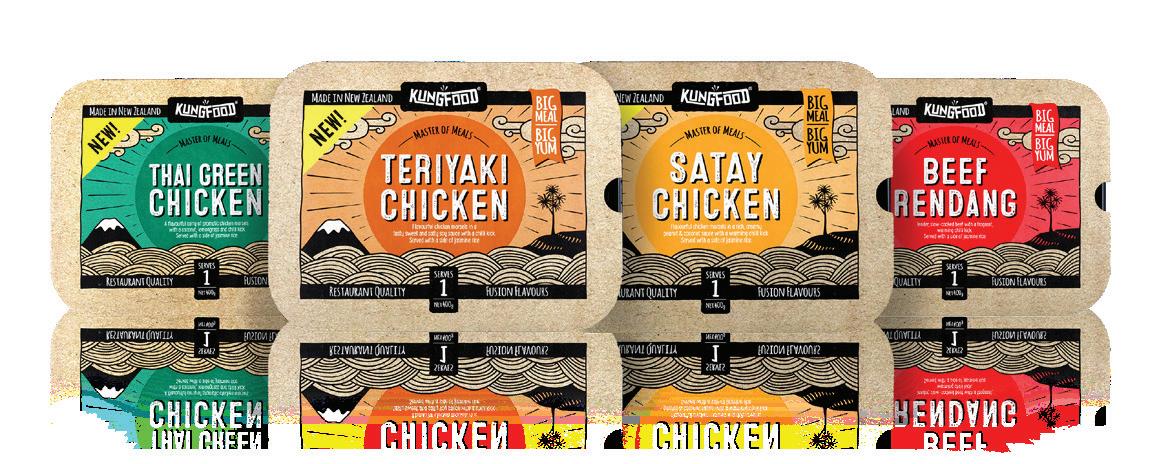

Beef Rendang 400g.
With Asian Fusion food being in hot demand and as the cost of living continues to rise, consumers will look to at-home takeaway options in their local supermarket that offer great quality and value for money. KUNGFOOD’s range offers consumers variety and the ability to pick and mix between flavours.
KUNGFOOD is available at Countdown, New World and selected Pak’n Save stores. Since launching in late 2017, KUNGFOOD has been premiumising the Dumplings, Steam Buns and frozen Ready Meals category and is the no. 3 Frozen Finger Food brand in New Zealand grocery. KUNGFOOD continues to receive significant brand support via digital, influencer and sampling campaigns.


For more information, please contact your local James Crisp Ltd Territory Manager: James Crisp Ltd, 202 Parnell Rd, Parnell, Auckland 1052. PO Box 1204, Auckland, 1140. Freephone: 0800 895 218.
For more information, visit www.kungfood.co.nz n
46 I supermarketnews.co.nz
ALDI’S POP UP DUMPLING TRUCK


Aldi in Bankstown Central, Sydney, turned into a takeaway shop for one night only, to show customers how a fakeaway dinner can be the ultimate trifecta - fast, affordable and delicious. The supermarket sold one serving of its Urban Eats label dumplings for $1.44 when almost half of Aussies are paying between $15-$20 for a takeaway meal.
The dumpling truck was a promotion for the Urban East range, which also includes
gyozas, spring rolls and bao buns.
“At a time when consumers are feeling the pinch, it’s rewarding to provide an option for people to enjoy their Friday night rituals when they shop with us. The ALDI Dumpling Truck demonstrates how good food doesn’t have to hurt your pocket. You can dish up quick, delicious and affordable Friday dinners at home for less than $1.50 a serve! We are so proud of our curated convenience range of frozen food items that
have been developed by our trusted supplier partners and are a firm favourite with our customers for good reason,” said Andrew King, Frozen Food Buying Director.
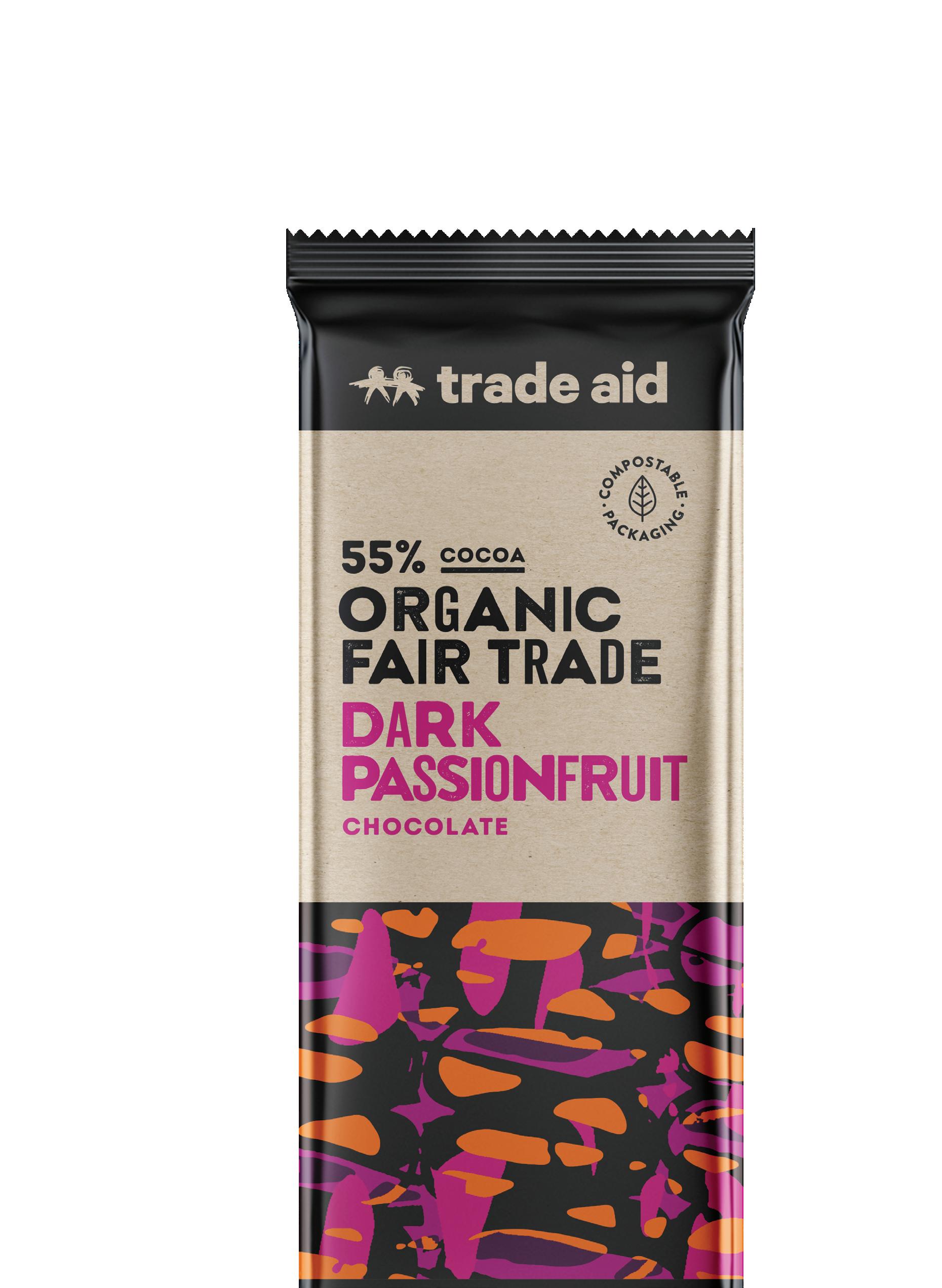
All proceeds from the dumpling truck, which was open from 5-7 pm on Friday, August 12, went to Aldi’s national charity partner - Camp Quality. n
Click to read more

storecheck NIGHT ‘N DAY TAKANINI GREY LYNN ONEHUNGA
Daniel Ford, OWNER-OPERATOR
Daniel Ford is the owneroperator of three Night ‘n Day’s in Auckland - Takanini, Grey Lynn and Onehunga. The Grey Lynn and Onehunga stores opened this year and are the company’s first stand-alone sites in Auckland. With Ford’s new stores, Night ‘n Day hopes to develop a loyal customer base in the North Island to match that in the South.

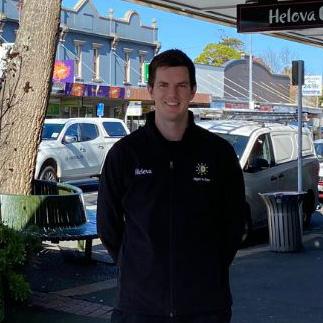
“W
hen I decided to take the leap of faith two years ago, I didn’t predict the timing of the stores opening and the extent of all the external pressures (labour, supply chain etc.) on business owners that have been incredibly hard to manage. I’m optimistic that I have partnered with a brand that is true to its family values and that two years into the journey, we are on the precipice of becoming an overnight hit in Auckland,” said Ford.
Ford grew up in Rotorua on his parents’ sheep and beef farm. After finishing high school, he left to live and work in the UK, then returned home to study PE teaching at the University of Waikato. During his time at uni, Ford started a personal training business that morphed into an online training one, which allowed him to spend a ski season in Canada. The snow was calling, so he worked as a PT and ski instructor in Wanaka before returning to university for a Bachelor of Science in human nutrition.
The ability to deliver for customers is something that he values. During his return to university in Otago, Ford discovered
the Night ‘n Day brand as a customer and worked as a checkout operator at Countdown. He was able to move into a department manager role and complete the Countdown Graduate Training Programme, all the while developing his love for FMCG.
“I always wanted to be my own boss and challenge myself to build a future for my family. That is why I started looking for ownership opportunities in the sector. Eventually, I settled with Night ‘n Day due to its strong kiwi values and being a family business.”
Ford described the process of opening two new stores as exciting, stressful and fun at the same time. There was plenty of learning about construction project management, getting things done efficiently, hiring staff, and setting up reliable systems and processes to train and support them. Great in-store leaders and franchise support meant the additional challenges presented to new builds by lockdowns and covid restrictions always had a solution.
A typical day at Night ‘n Day means an early wake-up call. Ford checks his morning teams and follows up with admin before planning the rest of the day. Typically,
48 I supermarketnews.co.nz IMPULSE convenience
he visits a store to help with day-to-day operations, training staff or filling gaps, and helping wherever is needed. He then repeats the process at his second and third stores, making for a very busy day.

“When I can, I try to get out of the store and connect with local schools, businesses and organisations to see how we can support each other and the local community.”
Ford believes that community is a real difference for Night ‘n Day; it is open longer hours, has a variety of products, and is locally owned and operated by people who care about their communities. Whether it be running out of toilet paper, milk or baby wipes, needing a coffee before work or late-night ice cream, the stores are there until 11 pm.

Ford sees the community aspect of Night ‘n Day stores in stand-alone and petrolconnected sites. Customers at the standalone stores come in for the best thick shake in town or a coffee, so the product is the destination item. Night ‘n Day is usually a secondary purchase for the petrol sites. When petrol is cheaper, the stores get busier and vice versa.
“Fortunately, we have grown a loyal



Night ‘n Day fan base at my petrol site and have regulars who wouldn’t get their coffee anywhere else - which is nice to hear!”
When it comes to concerns in the convenience industry, Ford has all the expected ones: ram raids, grocery wholesale and smoke-free NZ. He said it would be naive not to be concerned about ram raids, although there are strong security and alarm systems alongside fog cannons at all of his sites. There was an early morning breakin at one site, but the offenders only took some chocolate bars and were detained by police, thanks to the security systems. Grocery wholesale is a struggle for everyone at the moment, but new regulations hope to change this, and for tobacco sales, Ford is optimistic that Night ‘n Day will not have to rely on it in the future.
“It takes many people to make these ventures work, and we are breaking ground in Auckland. I am incredibly grateful that I have the support of the franchise, my awesome staff, business mentors, my family, and partner Stef in varying capacities both personally and professionally.” n

October 2022 I 49
Dave Hooker, EXECUTIVE DIRECTOR, NEW ZEALAND ASSOCIATION OF CONVENIENCE STORES
Hooker has been in the industry for over 35 years. He credited this to all the relationships he has developed over time, “the people that are in this industry tend to stay for a long time. I still have relationships with suppliers and retailers that go back 30 years.” Hooker spent 20 years with Mobil and eight years with BP, but it was quite early in his career that he specialised in the retail side of the industry, and it grew to be a passion.
WHOLESALE
New government wholesale regulations are something Hooker still finds a bit confusing. He is unsure of what will change and how the regulations will work when ultimately, things come down to the supplier. He does not doubt that the major players are working hard behind the scenes to provide solutions to high prices, but there is yet to be any fallout. Convenience stores might only order one or two cases of a drink, while the supermarket down the road orders an entire truckload. Are the suppliers going to be expected to manage these varying costs?
With Costco recently entering the wholesale market, Hooker believes that if they offered products at the right price, businesses might use them as a supply outlet. But, realistically, with only one store in West Auckland, there is only so much impact the company can have. Costco is also a competitor in the convenience sector with their fuel offering. Businesses within its trading area are almost definitely being impacted due to their petrol prices being so much lower. If they were to expand, it could become a problem for petrol companies as customers in Auckland are already travelling from far and wide to fill up their tanks with gas that isn’t so hard on the wallet.
THE CONVENIENCE SECTOR
SupermarketNews spoke to Dave Hooker, Executive Director of the NZACS, about some of the industry’s biggest topics right now, what is happening inside the NZACS and what the future holds for convenience.


RAM RAIDS AND SECURITY
The members of the NZACS have invested millions, if not tens of millions of dollars, over the last 15 years on security - so they are well ahead of the game. A few years ago, members experienced a severe rise in robberies and ramraids. After investing in security measures such as night pay windows, smash-proof glass, CCTV, fog cannons, safe rooms and personal alarms, incidences dropped off dramatically.
The group's members are predominantly organised retailers and multinationals with the capital to make significant security investments and with employee safety as the number one concern. Hooker noted that the retailers getting hit in ramraids are predominantly smaller dairies, liquor stores and jewellers that unfortunately don’t have the means to invest in heavy-duty security measures.
SMOKEFREE
There are three areas of concern regarding the SmokeFree regulations for NZACS members. The first is the tight proposition, which will see between 6,500 and 7000 retailers shrink to 500.
“It’s incredibly impractical. New Zealand has around 2,000 postcodes, each one having up to 10,000 households. Even dropping numbers to 2,000 stores wouldn’t even be enough to service the population.”
Then there is concern over how stores will be selected to licence. Will it be the dairy, FourSquare, liquor store or service station in one small town? Not only is deciding who gets it and who doesn’t a challenge, but the store that does get the licence will be a target; they will have to factor in the extra cost of stock and the long hours needed for service.
The second issue is the proposal of very low levels of nicotine. As a product of
50 I supermarketnews.co.nz IMPULSE convenience
SCHOLARSHIP RUNNER UP FERNAND DIGNADICE, FRUCOR SUNTORY
genetically modified tobacco, it is currently not commercially available in New Zealand and doesn’t deliver the amount of nicotine a smoker requires.
“It is like asking someone addicted to alcohol just to drink low alcohol beer; they have a better chance of drowning themselves before getting the desired effect.”
The third piece is the ‘SmokeFree Generation’. The practicalities around having to ID people progressively getting older are complex; there are non-citizens, tourists, and people on work visas who also need to be considered.
Hooker believes that vaping is a helpful transition for smokers, but these regulations also need to improve. The NZACS lobbied unsuccessfully to continue to sell a limited number of flavours, even if it was just six adult flavours. Flavours were then regulated exclusively to Vape shops. But regardless of the current ruling, convenience is still seeing growth in vape sales.
“Like everything to do with smoke-free, the aspirations are good, and we fully support them, but the practicality of it is very, very thorny and difficult.”
WITHIN THE NZACS




At the end of August, the NZACS held its annual awards evening. Over 100 guests and 30 companies attended after a long break since the last event due to Covid.

“It was a really good night, probably our strongest and best attended in quite a number of years,” said Hooker.
The Peter Jr. Scholarship for young people in the industry is held alongside the awards. Nine thought-provoking entrants participated this year, a much higher intake than the typical five or six entrants. Kathlynn Lee from BP was the scholarship recipient, with her presentation on reinventing convenience coffee. She suggested bar taps filled with quality pre-made bulk coffee that lies between horrible push-button coffee and staff-heavy barista-made coffee. The runner-up was Fernand Dignadice from Frucor Suntory, who discussed a pharmacy dispensary machine called Farmer Collect. As valuable products are prone to theft, a vending machine to service the category would protect the items.
Another event from the NZACS is the Convenience and Impulse Expo and Industry Leaders Symposium. Held in October, with speakers from NPG Retail, Trents Wholesale, Coca-Cola Oceania, Z Energy and Bowser Bean.
WHAT THE FUTURE HOLDS
When we asked Hooker what the future of convenience looked like, he said there is no way to be sure of what will happen.
For the first time in many years, the industry received an annual report
highlighting areas where sales are going backwards; in-shop sales were down $64 million on the previous year, excluding tobacco sales which were down $6 million, and unit growth was down five percent. It is becoming a challenging sales environment, as the prices of everything increase. In particular, as petrol prices increase.
“Petrol used to flirt around $2, and we thought $2-$2.20 would be the breaking point for shop sales, but things just keep increasing. Now we are struggling to get under $2.60, and we have even bounced off the $3 plus numbers.
While the correlation between petrol price and shop spend is prevalent in-store, there is a change among different categories. Tobacco will continue to decrease and is yet to be offset by e-cigarette and vaping sales. Beverages and confectionery are still strong. Coffee has always been a stand-out category, but this year, it seems to have reached its peak with no growth for the first time ever. In turn, a category that appears to be increasingly popular is pharmacy and health products.
“I couldn’t tell you what the next few years will look like because it will be a very interesting space to watch. But that is a common answer for everyone at the moment - no one knows. Depending on the Smokefree outcomes, things could be very different.” n
October 2022 I 51
SCHOLARSHIP WINNER KATHLYNN LEE , BP
minutes with
Murray, RETAILER, Z ENERGY
As the Good in the Hood fundraiser returns, SupermarketNews spoke to Keith Murray - the licensed retailer operating 14 Z Energy sites within Auckland. From Glenn Innes in the East, Hillsborough in the West, to the city’s waterfront, he knows convenience retail.


Murray grew up in Rotorua; his first job after school was driving the forklift and stacking freight for a road transport company.
In his early twenties, he obtained his management cadetship before moving to Wellington and working as a Shareholder and director of various transport companies while completing his university education at night. A change of pace then meant moving into wholesale plumbing and the electrical industries. However, in 2006 an opportunity to join Foodstuffs arose. Murray took on multiple roles within the cooperative, including Gilmours Group Manager and Group Manager of Fresh Foods and Liquor, and National Supply Chain Operations Manager.
After working in retail trade for around
18 years, Murray firmly understood the convenience and retail industry and became a Z Retailer in late 2014. At the time, he reviewed his investment strategy, and an opportunity with Z was too good to turn down. An application, various interviews and working onsite for suitability saw him successful.
“I enjoyed the pace and how things continue to evolve to better meet customer news. Retaining a passion is easy as the industry is dynamic and continually evolving. That brings endless possibilities both personally and for the business,” said Murray.
No two days are the same at Z since the sites trade 24/7, meaning there is always something to be done. The role of a retailer is about understanding what customers need
52 I supermarketnews.co.nz
Keith
20
IMPULSE convenience
and giving support to site staff that can only occur at the coalface.


Good in the Hood is the community fundraiser Z has run since 2013. Each service station selects four different community groups to support and receive a portion of the $4,00 donation. Customers who shop in store are given an orange token to vote for their selected charity, and the money is split based on the number of votes each group receives.
“Good in the Hood is a fantastic local community initiative. Sharing $1 million across all the Z service stations across the country, it gives us the chance to support the things that matter specifically to our community.”

Murray’s site staff are involved in selecting the local community groups or charities at the stations he operates. The charities vary from large national organisations such as Child Cancer and Victim Support to smaller localised groups such as the Hillsborough Foodbank and Te Waipuna Puawai.
The operator sets high standards for his stations to ensure consistency through layout, product offerings, customer service, pricing and cleanliness. His aim is to generate a feeling in customers that makes them say Z is “my first place of choice.”


Location and customer profile dictate the best-selling categories among Murray’s 14 stores. His Quay Street site is heavily orientated around port workers, while Sandringham is related to commuters travelling to and from the city. But overall, coffee, cold beverages, bakery food, snacks, ice creams and perishables such as milk and bread always sell.
Offering fuel makes it easy for customers to pick up a coffee, a bite to eat or some grocery essentials. The challenge is maintaining ease and simplicity for customers as their needs and behaviours change. A challenge to the sector would be the move to a low-carbon economy. For Z, this may mean having EV chargers on site, so customers can continue to have the convenience of accessing the retail store while recharging their cars. Murray is also acutely aware of the Smokefree Aotearoa policy that the industry is adapting to.
“I see our industry entering an exciting period of change. The rise of EVs and innovation with alternative fuels will reshape Z as a company and how service stations will look in the future. Technology will also play a greater part in how both customers interact during the shopping experience and how retailers will continue to enhance the customer experience. It’s going to be fun.” n
October 2022 I 53
Good in the Hood is a fantastic local community initiative. Sharing $1 million across all the Z service stations across the country, it gives us the chance to support the things that matter specifically to our community.
VIVA ENERGY ACQUIRES COLES EXPRESS
Viva Energy Group Limited has announced that it will acquire the Coles Express convenience business from Coles Group (Coles), creating the largest fuel and convenience network in Australia under a single retail operator. Coles Exp ress brand will eventually be replaced, but the petrol offering will retain the Shell brand.

“This is an exciting step for Viva Energy
that will enable us to further extend our network, invest in new and innovative convenience offers across our stores, and enhance our loyalty and digital programs to simplify the way our customers transact with us,” said Scott Wyatt, Viva Energy’s Chief Executive Officer. n
Click to read more
CONVENIENCE COLLABORATION WITH CROCS
Crocs and 7-Eleven have released a limited edition collaboration. The first-round release of the shoes sold out almost immediately, with a second drop planned for the 7th of November or 7/11.

The Mega Crush, Classic Clog and Sandal all feature in the release in the 7-Eleven colours.
Fans can also purchase exclusive Jibbitz charms of the 7-Eleven logo, Slurpee drink, coffee, pizza, hot dog and more. n
Click to read more
INCONSISTENCIES NEED SORTING WITH SALES OF VAPES
Since the 2020 vaping legislation was passed and subsequent regulations enacted, only licenced Specialist Vape Retailers (SVRs) can stock a full range of flavours. General retailers such as dairies are limited to selling just mint, menthol, and tobacco flavours. Many dairies have subsequently separated off part of their premises to be SVRs.
“Dairy owners are right to say being allowed to sell only three vape flavours is not helping New Zealand achieve Smokefree Aotearoa 2025, but some of them are not helping themselves,” said Nancy Loucas, co-founder of Aotearoa Vapers Community Advocacy. n

Click to read more
DELIVEROO FIRST BRICK AND MORTAR STORE
Deliveroo has opened its very first physical store, Deliveroo Hop, in a partnership with Morrisons. The store located on New Oxford Street in London, will allow customers to order on digital kiosks or the app and serves as a collection point for staple groceries.
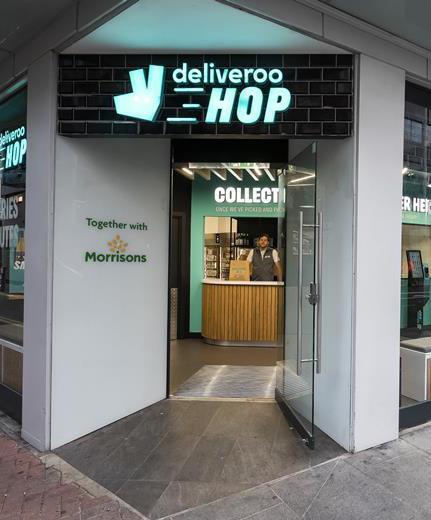
The store offers a range of 1,750 grocery items from Morrisons ‘Ready to Eat’ and ‘The Best’ ranges, alongside other staples, snacks and dinner ingredients. There are 19 dedicated staff members for fulfilling orders.
“Our New Oxford Street store promises a new way to shop for Deliveroo customers, giving them even greater flexibility and choice and should help boost the local area, with nearly two-thirds of shoppers saying they will visit other nearby shops as they come to shop with Deliveroo,” said Eric French, COO at Deliveroo. n
Click to read more
54 I supermarketnews.co.nz IMPULSE convenience
EFFICIENT RETAIL AND FMCG MANUFACTURING
Why good pallet racking is the foundation of efficient retail
Any business that stores products in a warehouse needs to run smoothly, but time, speed, and accuracy are especially important for the retail industry.
A company with a large turnover of Fast Moving Consumer Goods can churn out thousands of items per day, so efficiency is the key.
The smallest blip in a warehouse can have disastrous consequences further down the supply chain, and a warehouse is only as good as its pallet racking.

THE UNIQUE CHALLENGES OF RETAIL AND FMCG
Products in the retail industry often have a short shelf-life and sell quickly at a relatively low price. Because of this, warehouse pallet racking must be designed and built specifically with retail in mind.
It takes an efficient, precise, and lightningquick system to handle high numbers of goods in a short timeframe, able to overcome any unexpected issues with a minimum of disruption.
PRS's expertise in this matter helped one of New Zealand’s biggest snack food manufacturers to increase its storage space by 30 percent.
At their Wiri factory in Auckland, Bluebird produce the nation’s favourite potato chips, but with space running out, they turned to PRS for help.
They worked closely with Bluebird to reconfigure their warehouse to maximise every inch of space, knowing that as a


food manufacturer, freshness is crucial, so a solution that would ensure the correct products were dispatched on time was needed.
Of course, everyone knows the dangers of living in the Shaky Isles, and PRS was there for Original Foods in Christchurch when they needed earthquake-safe storage, fit to withstand a range of temperature zones.
The installation was specifically built to suit temperature-controlled zone requirements, with seismic bracing incorporated into the design to comply with strict council regulations.
THE BEST PALLET RACKING IN NEW ZEALAND


The retail industry is highly competitive, and to stay in the game, you need your warehouse to be running at its peak.
PRS can help you run a tight, efficient, and safe ship, including goods coming and going, getting the most out of your space, and the safety of your workers.
If you’re looking for experienced storage advice, quality products, unbeatable service, and professional installation, then you’ve found PRS. n


October 2022 I 55































 Tania Walters Publisher
Tania Walters Publisher























































 By INCITE
By INCITE






































 By United Fresh
By United Fresh


















































































